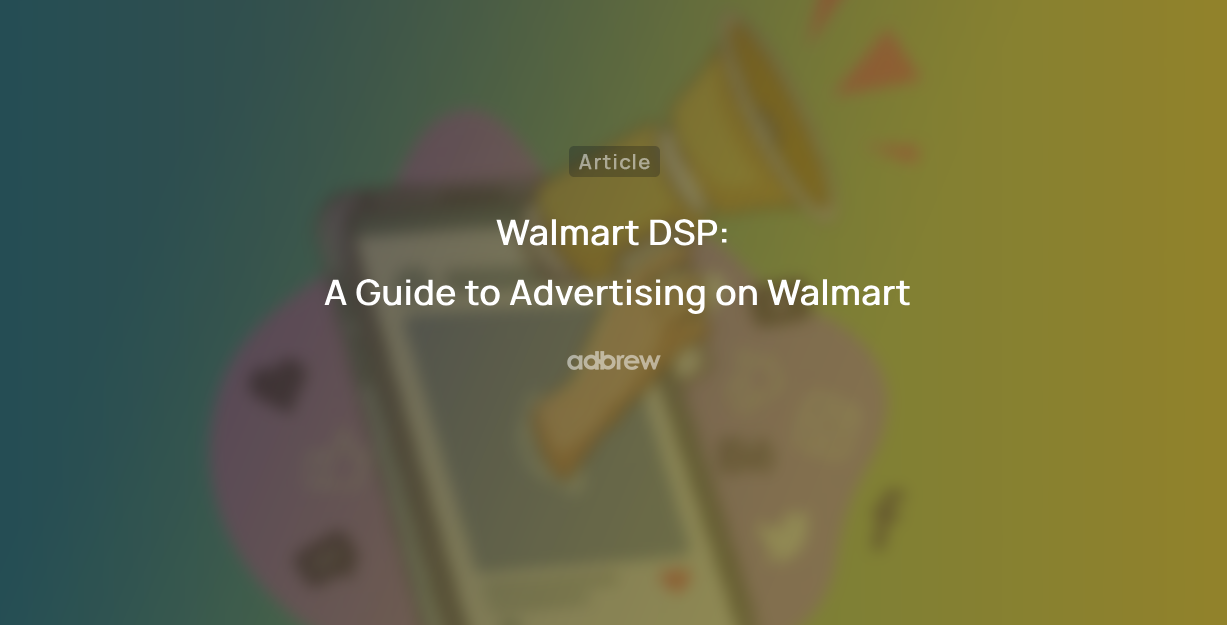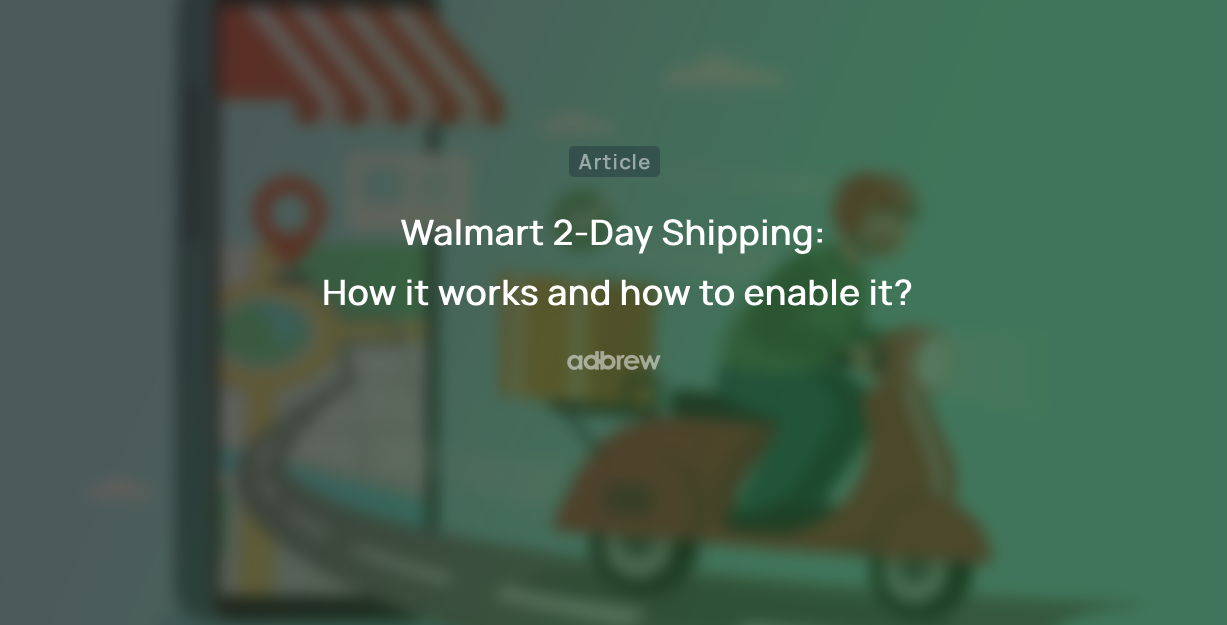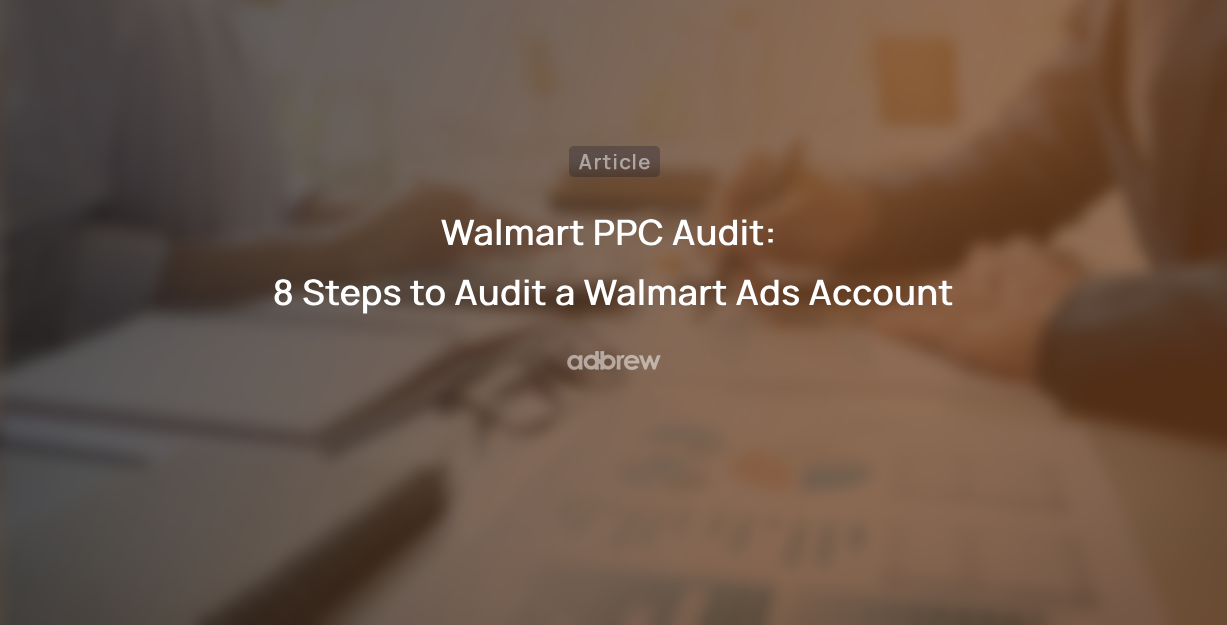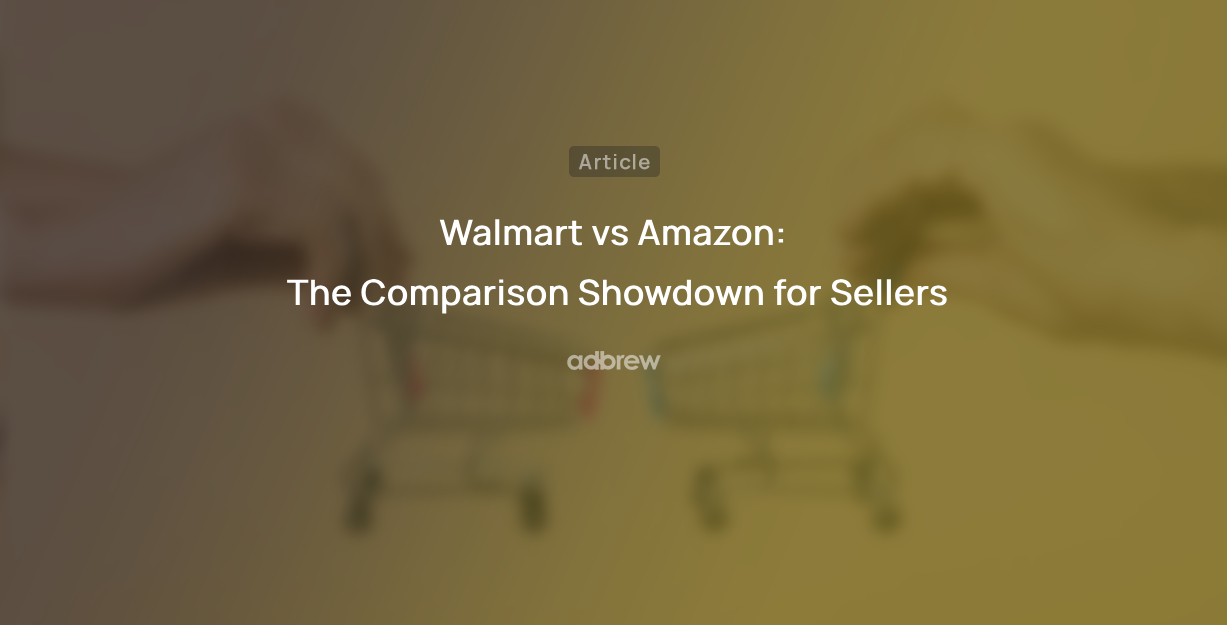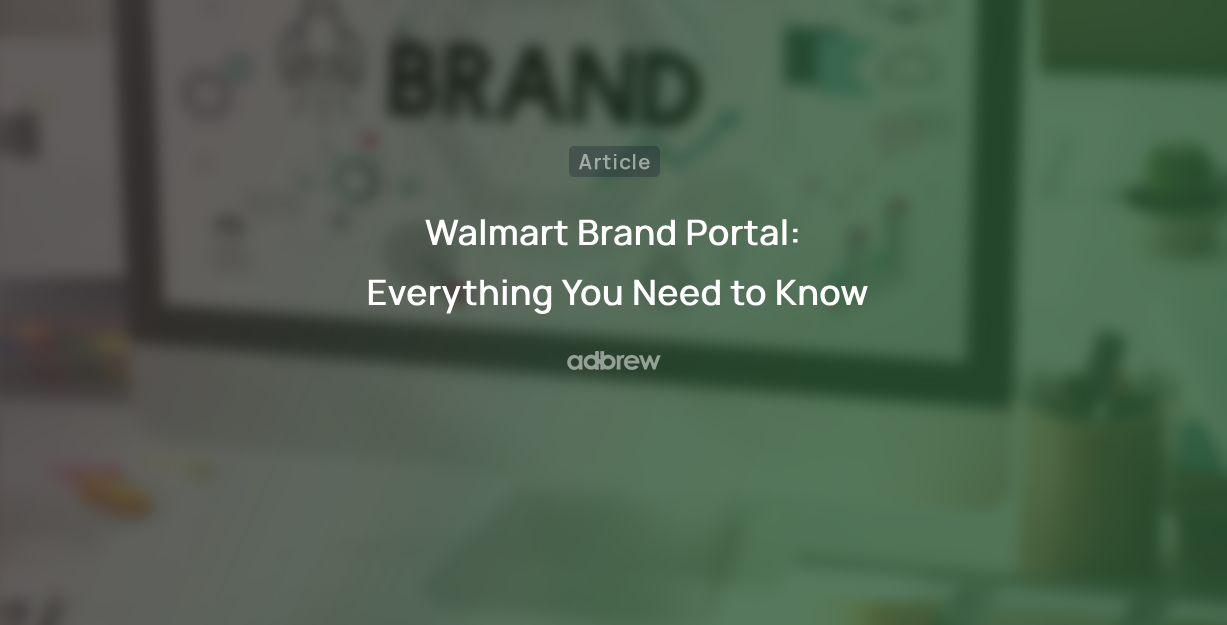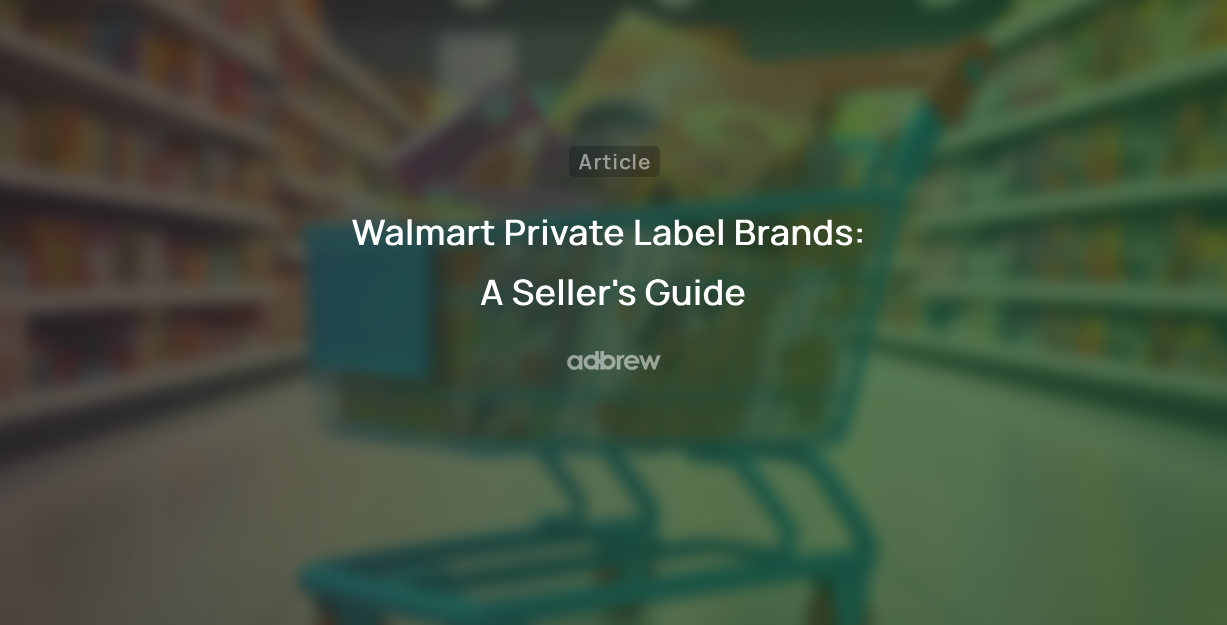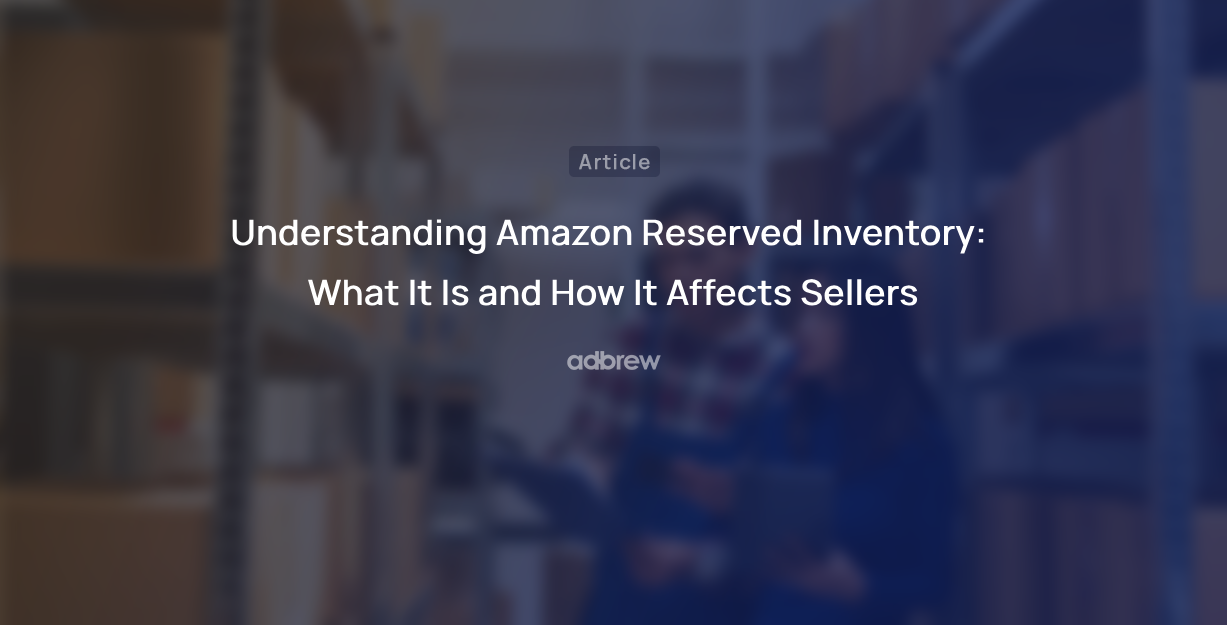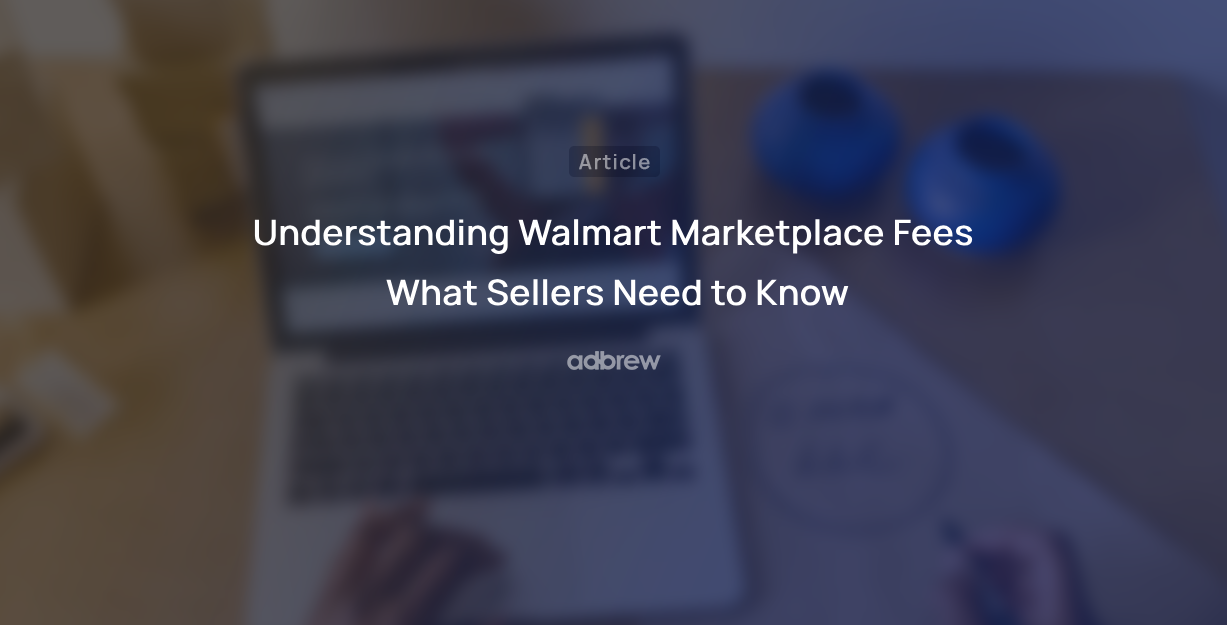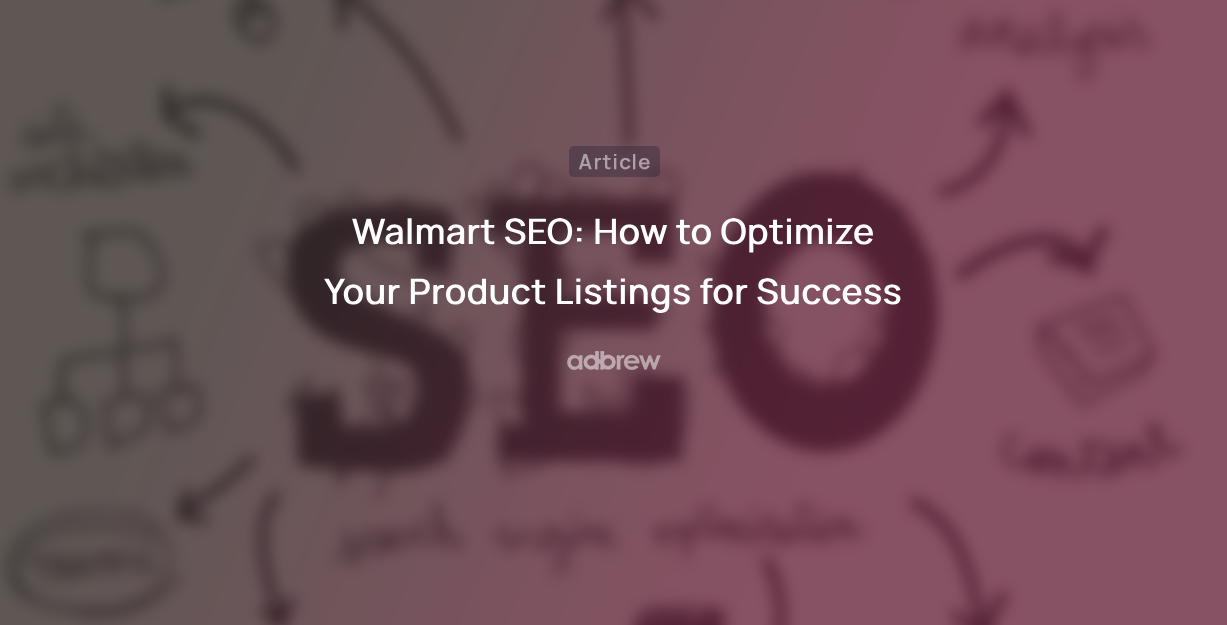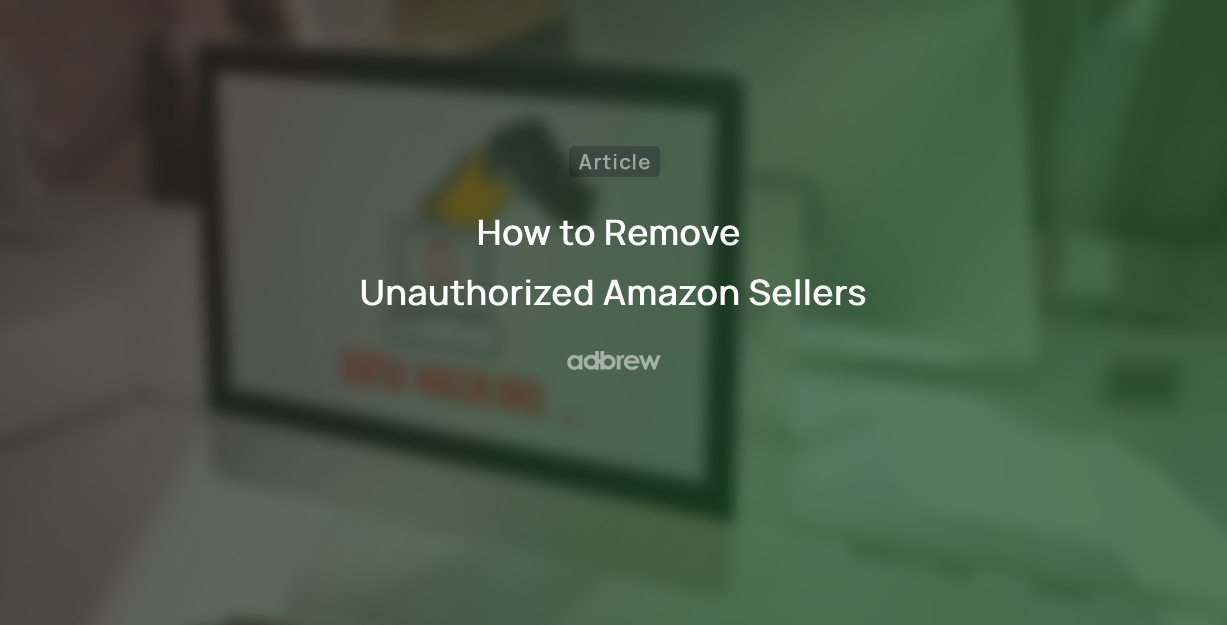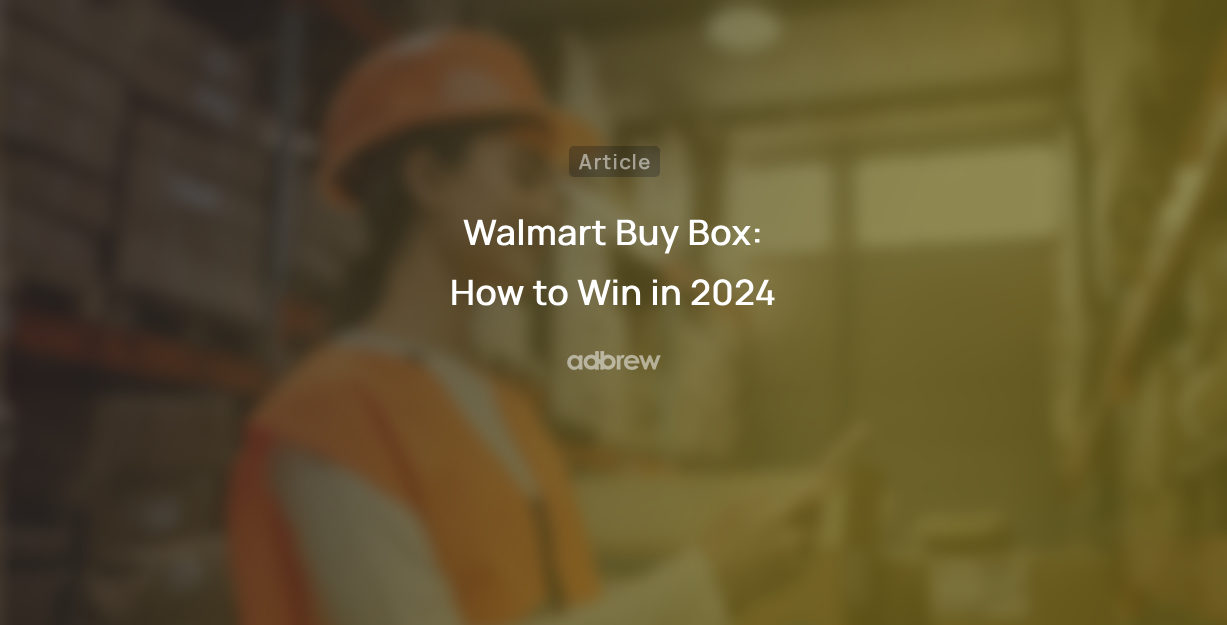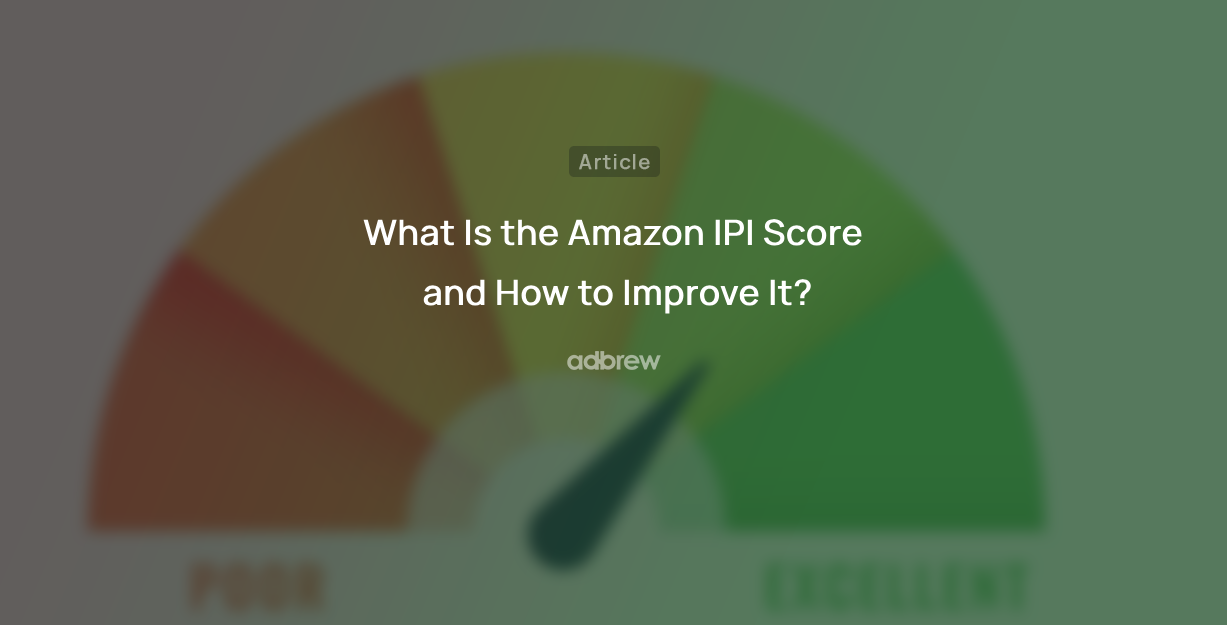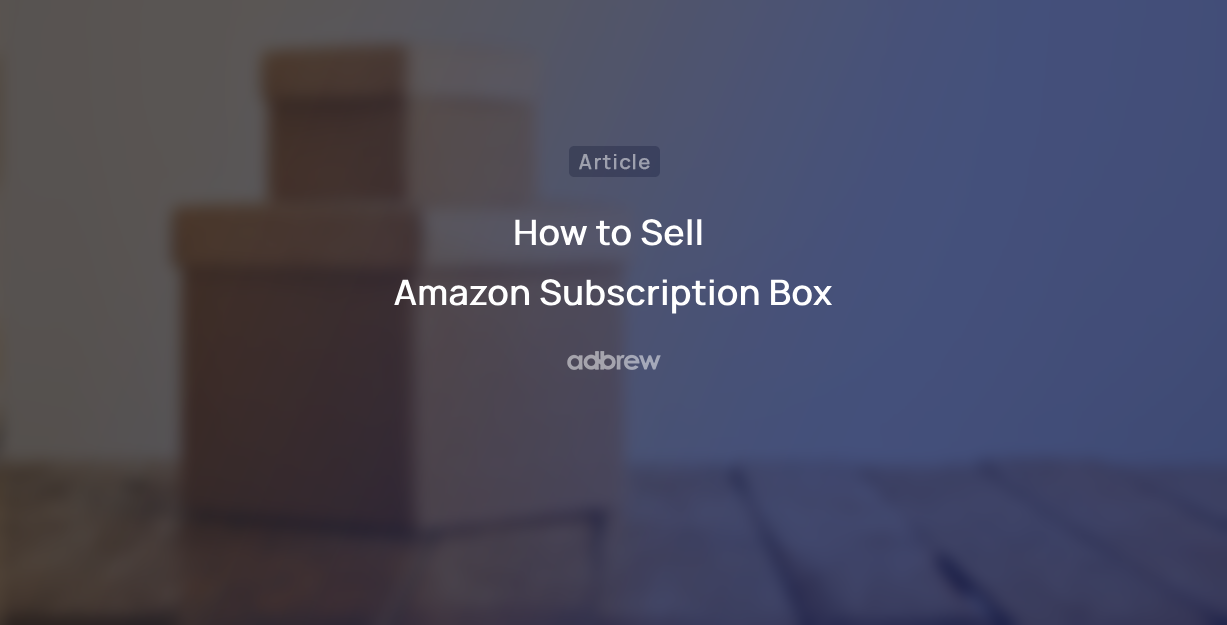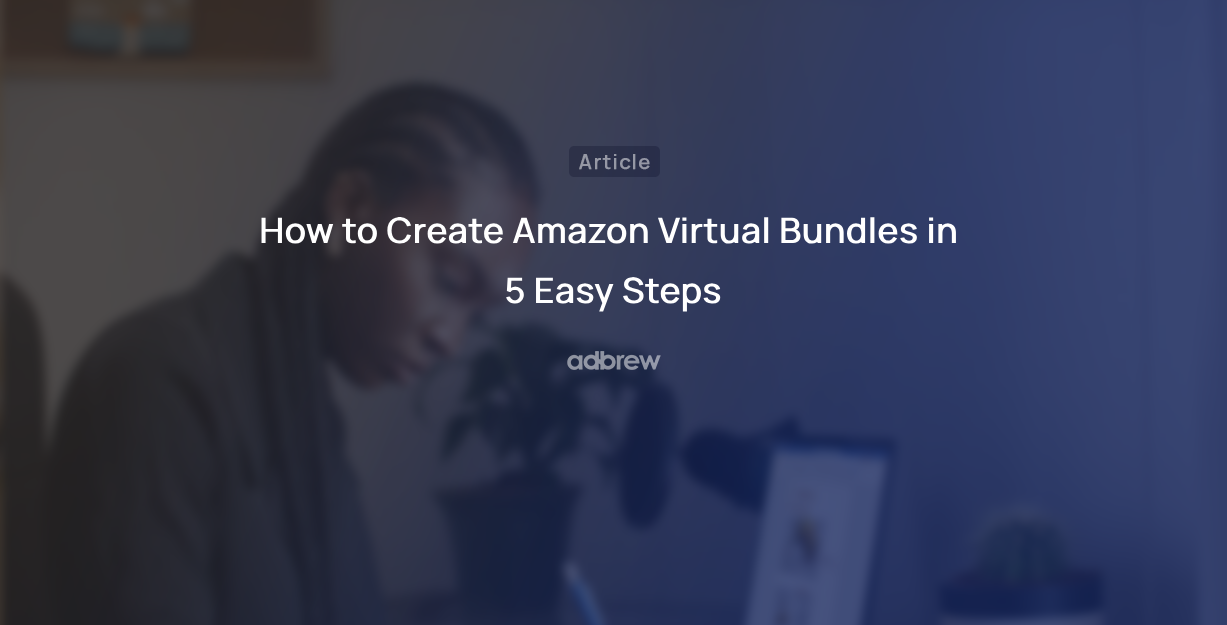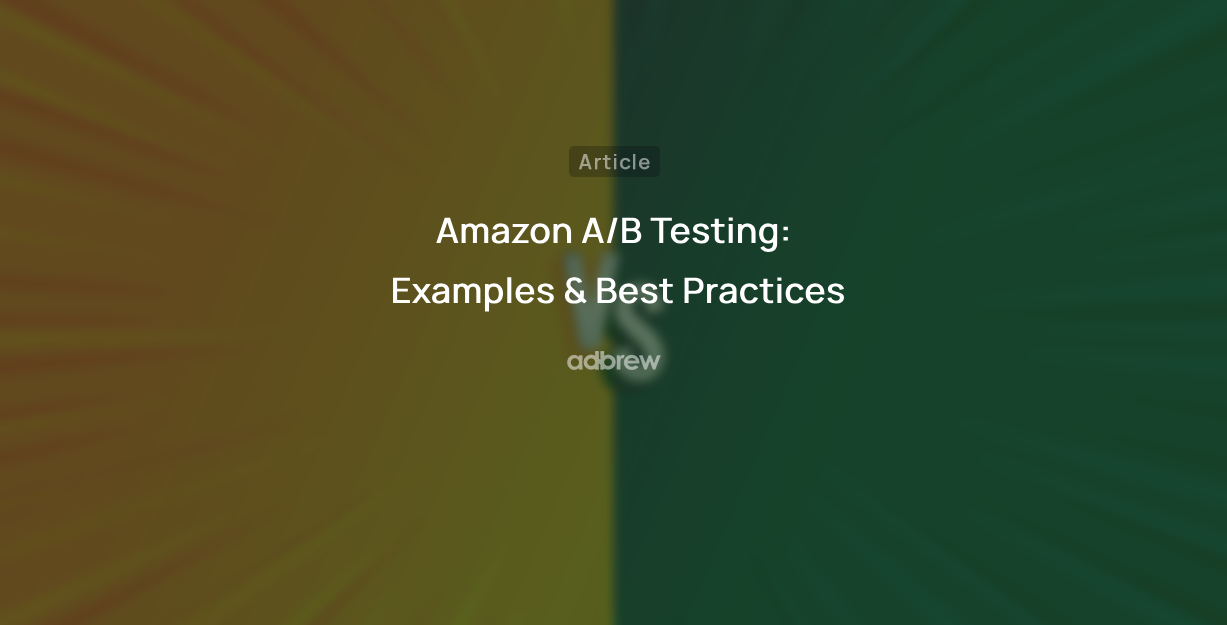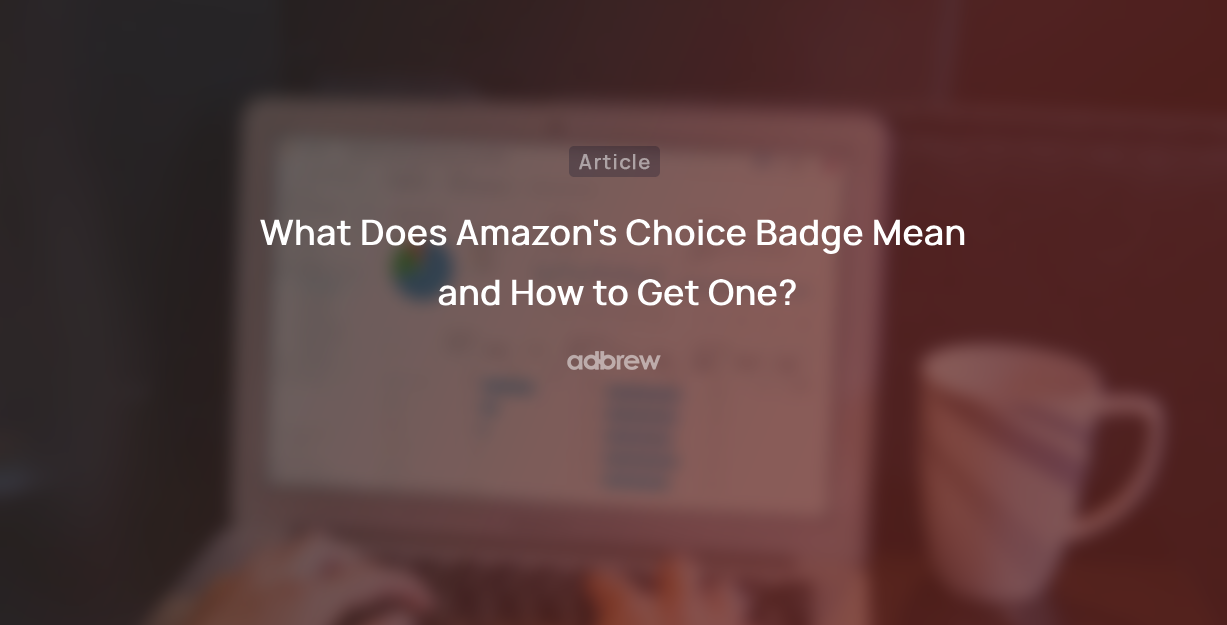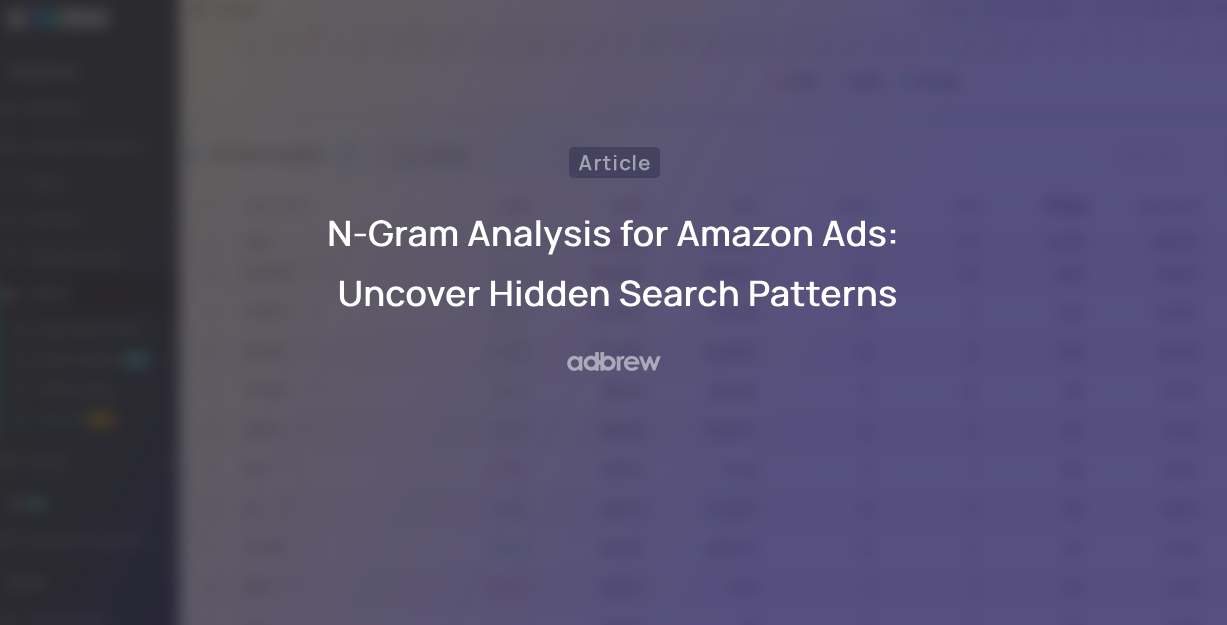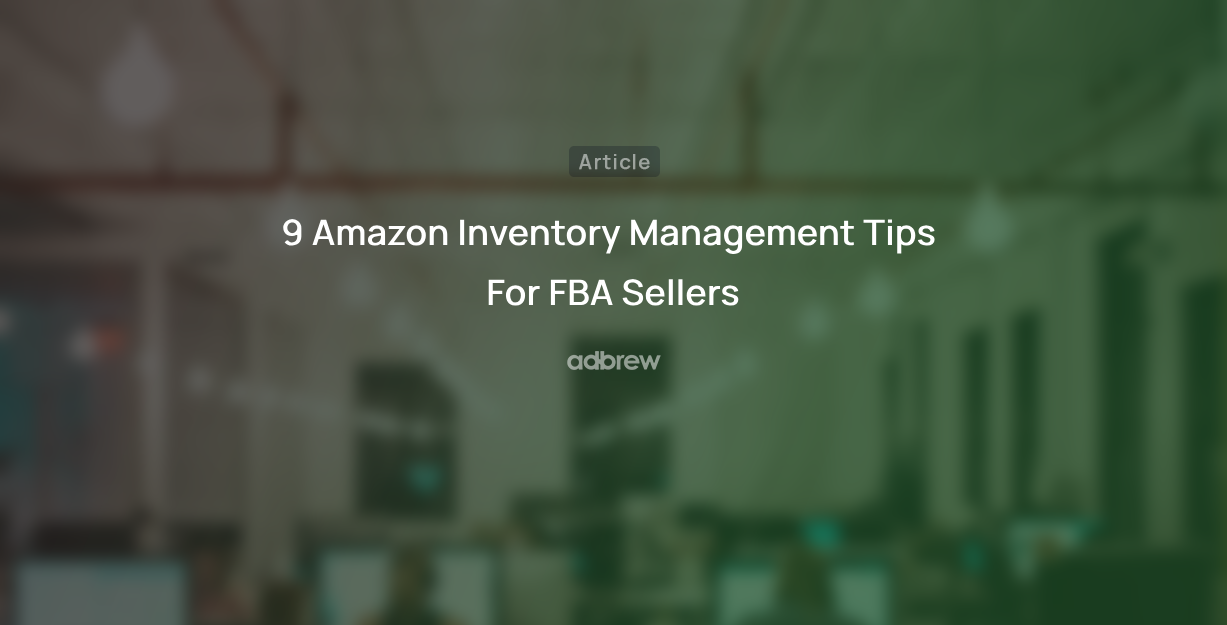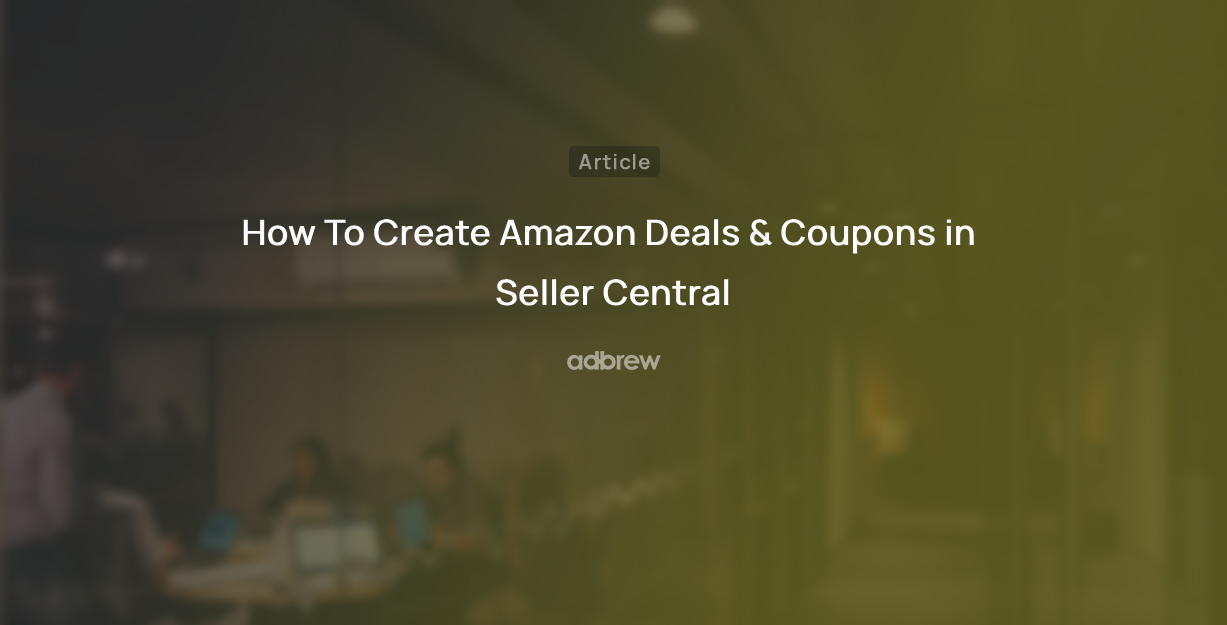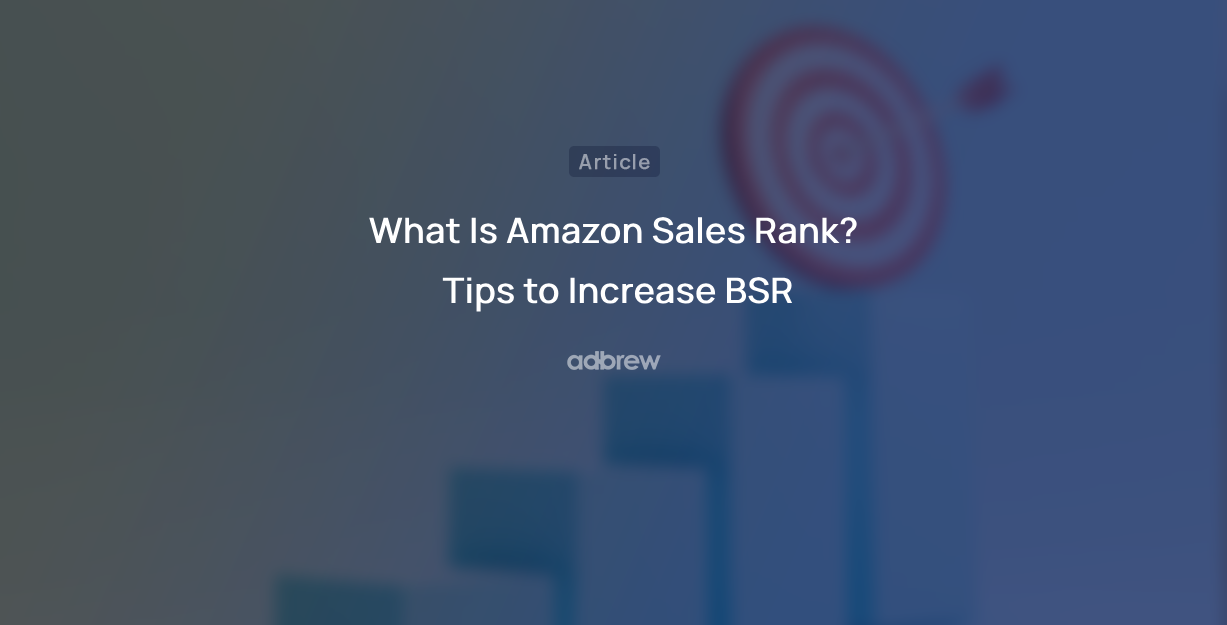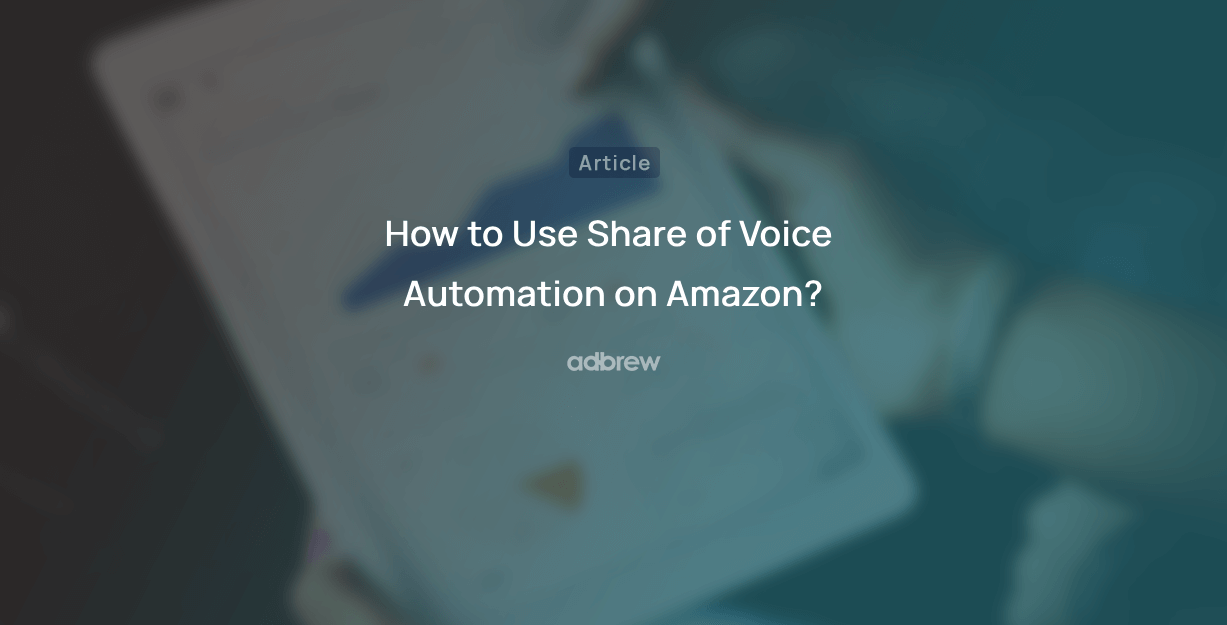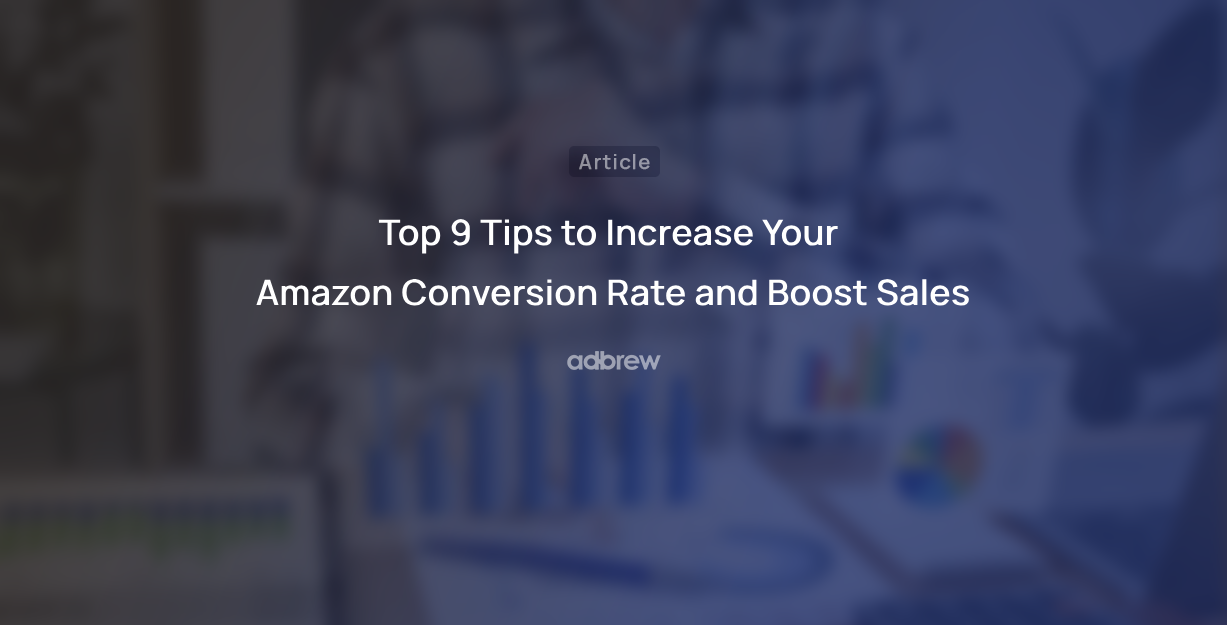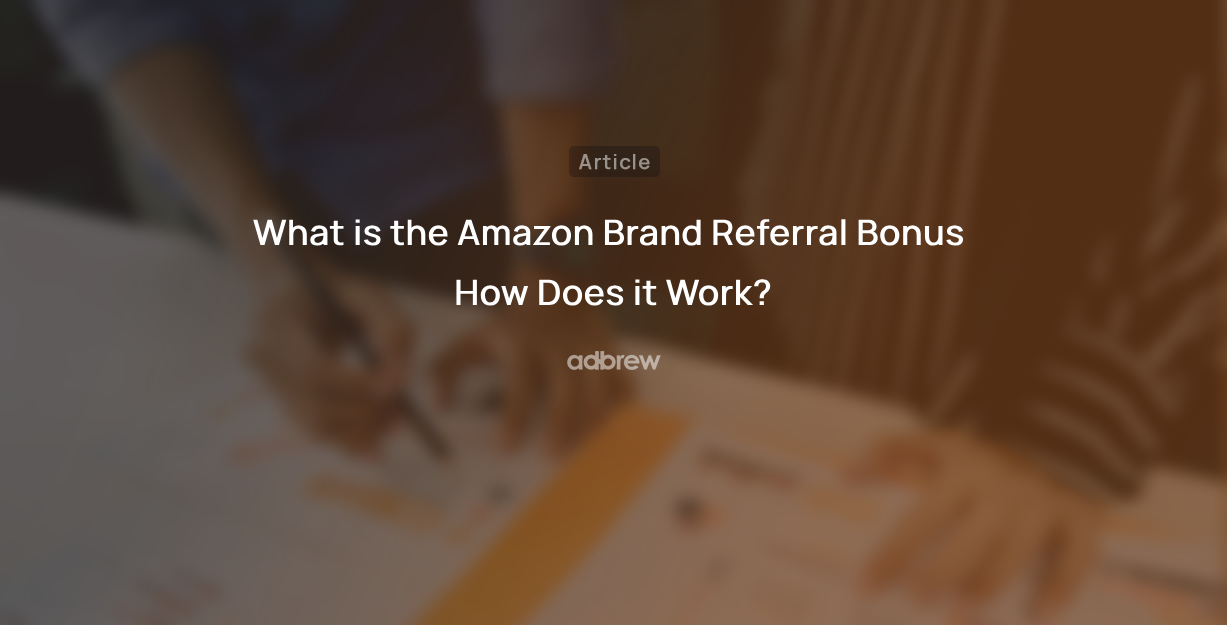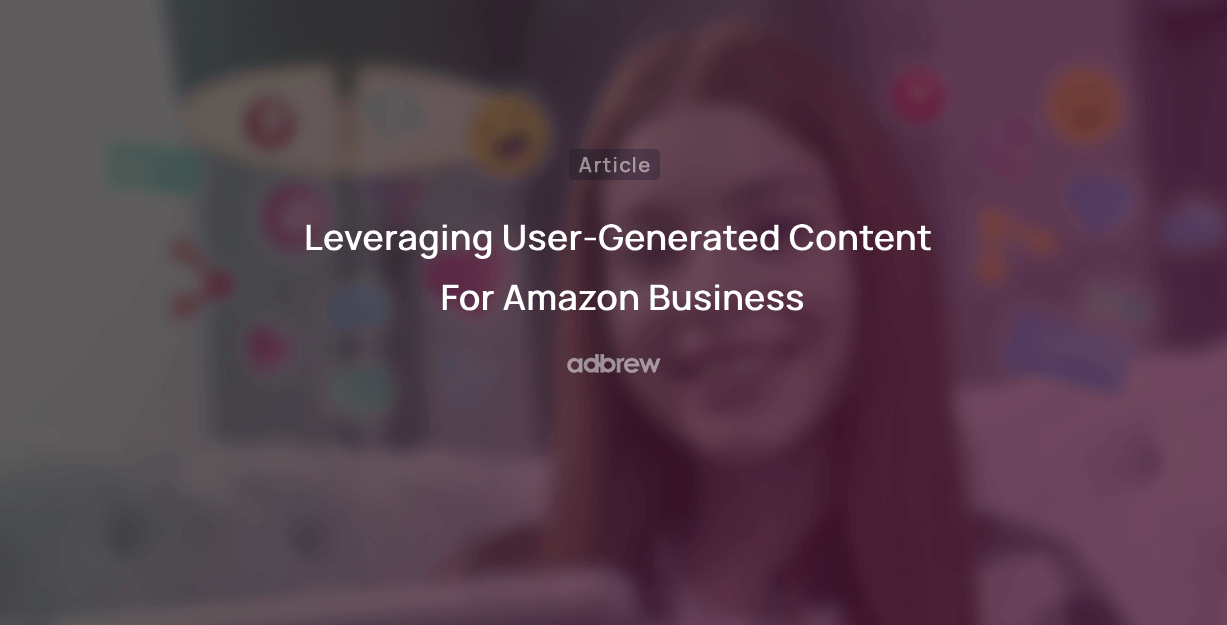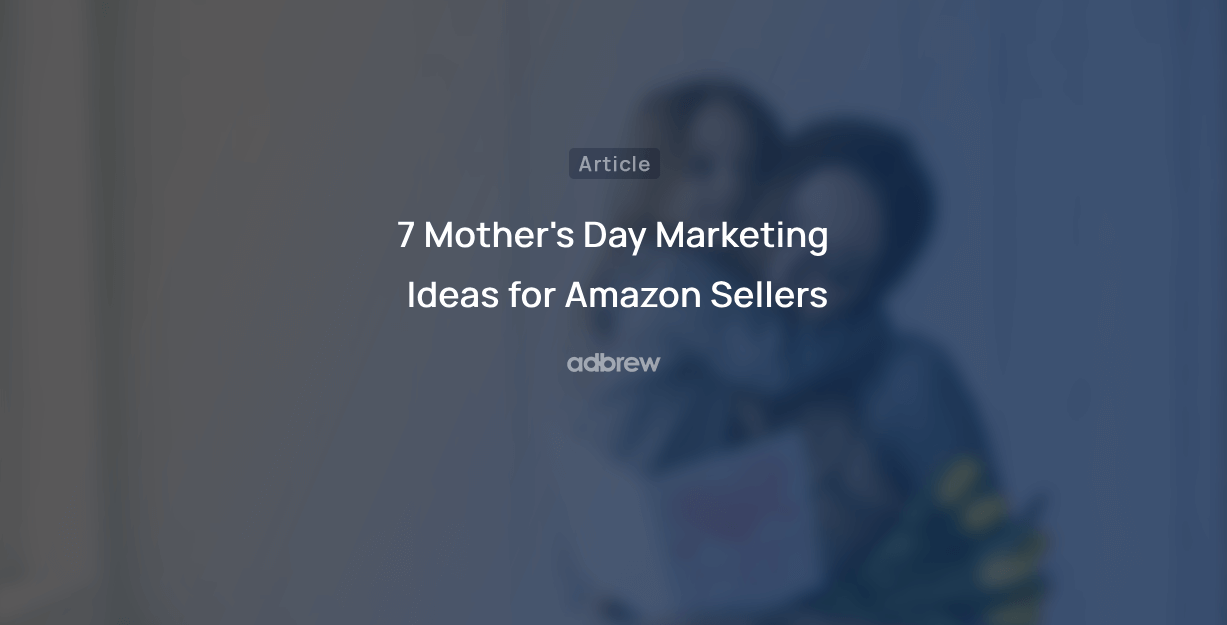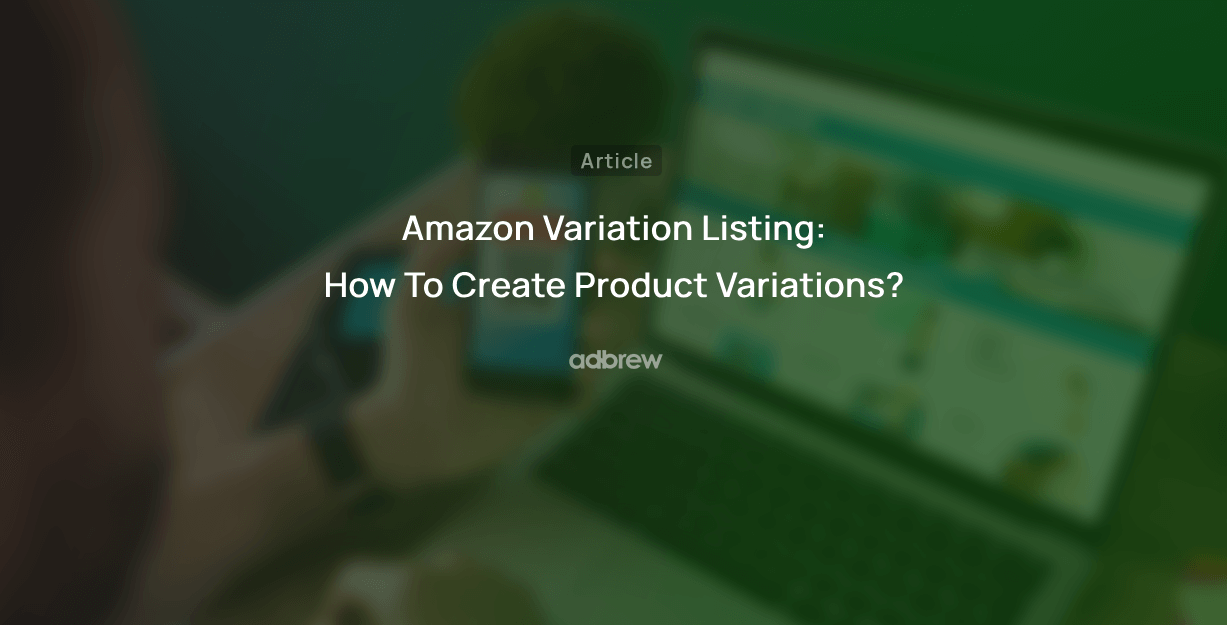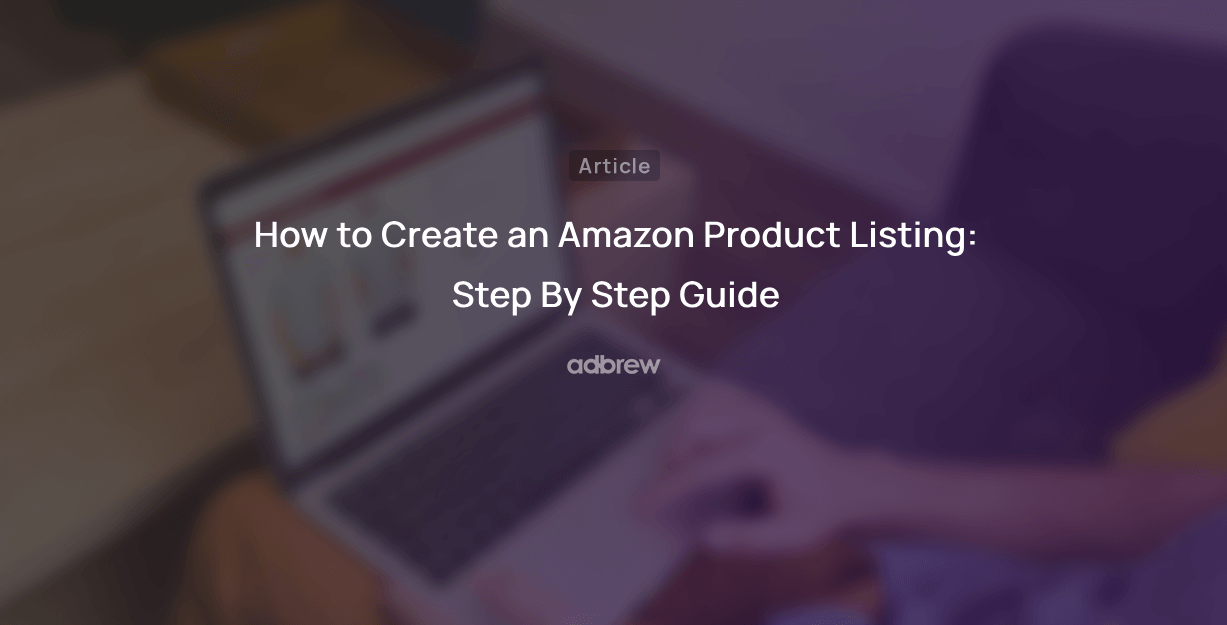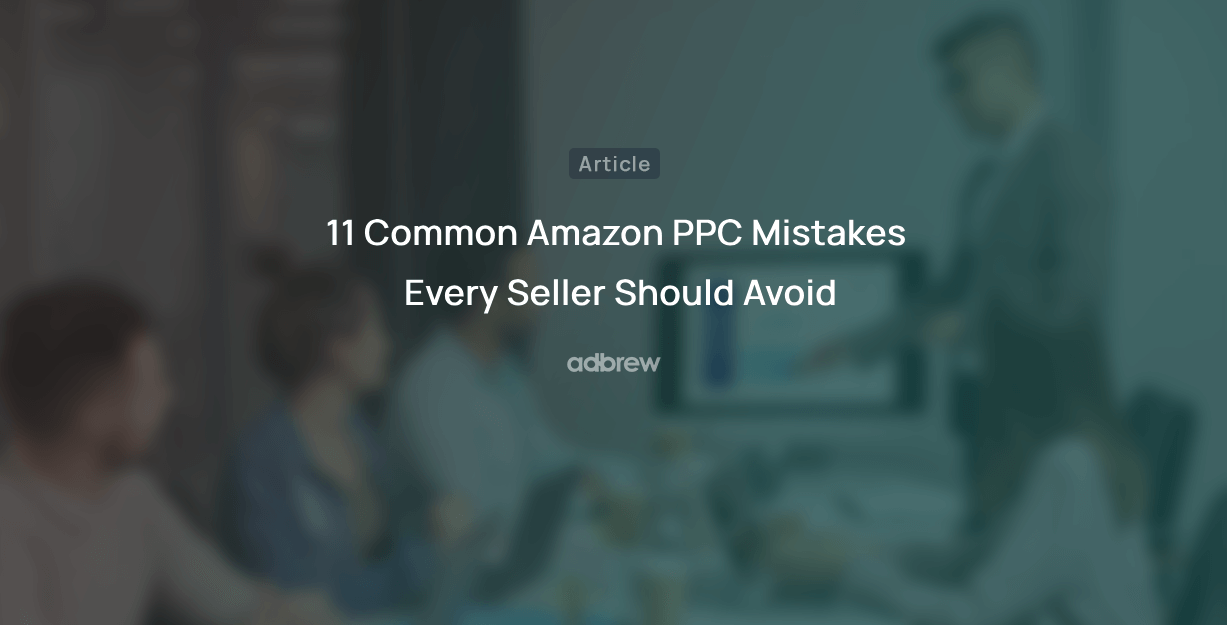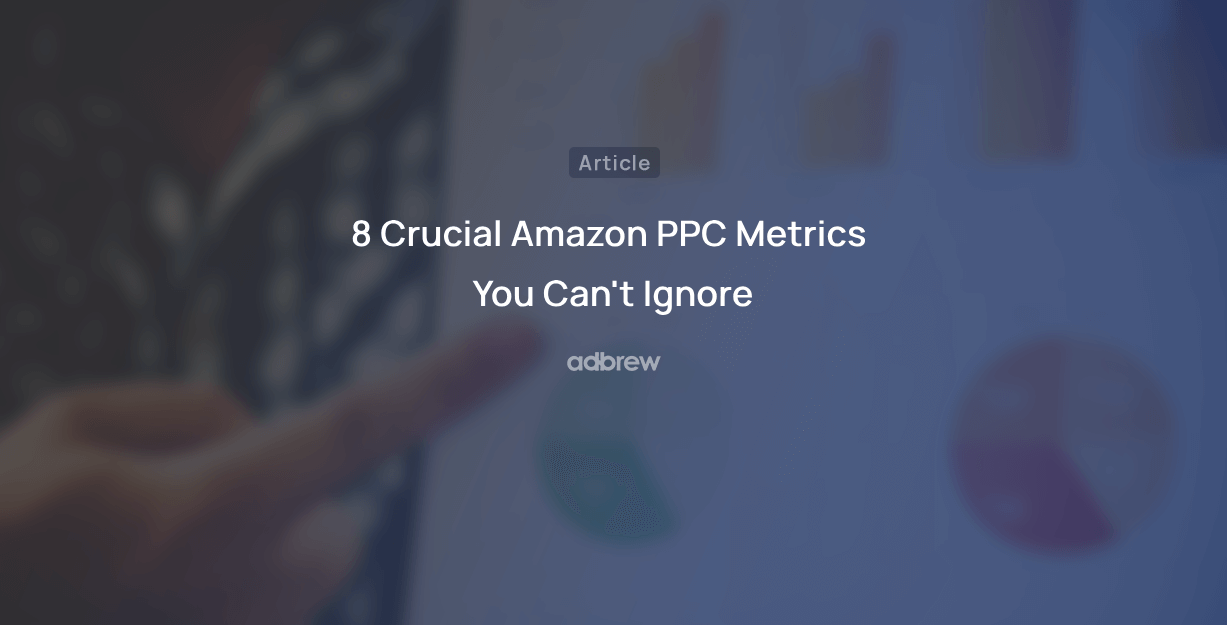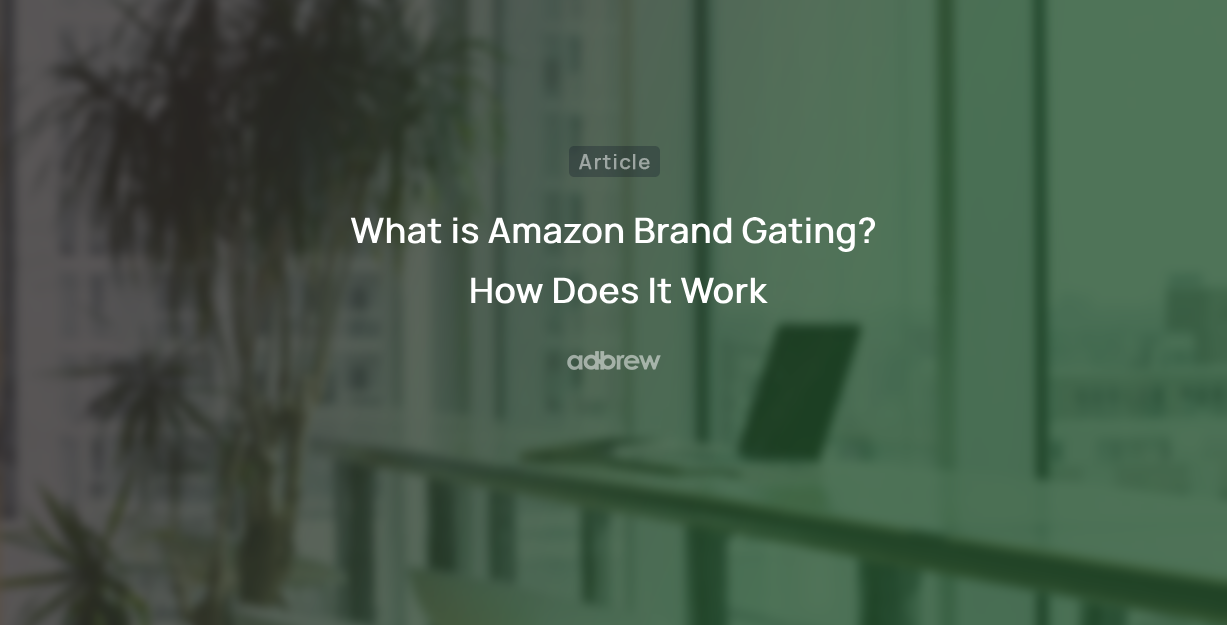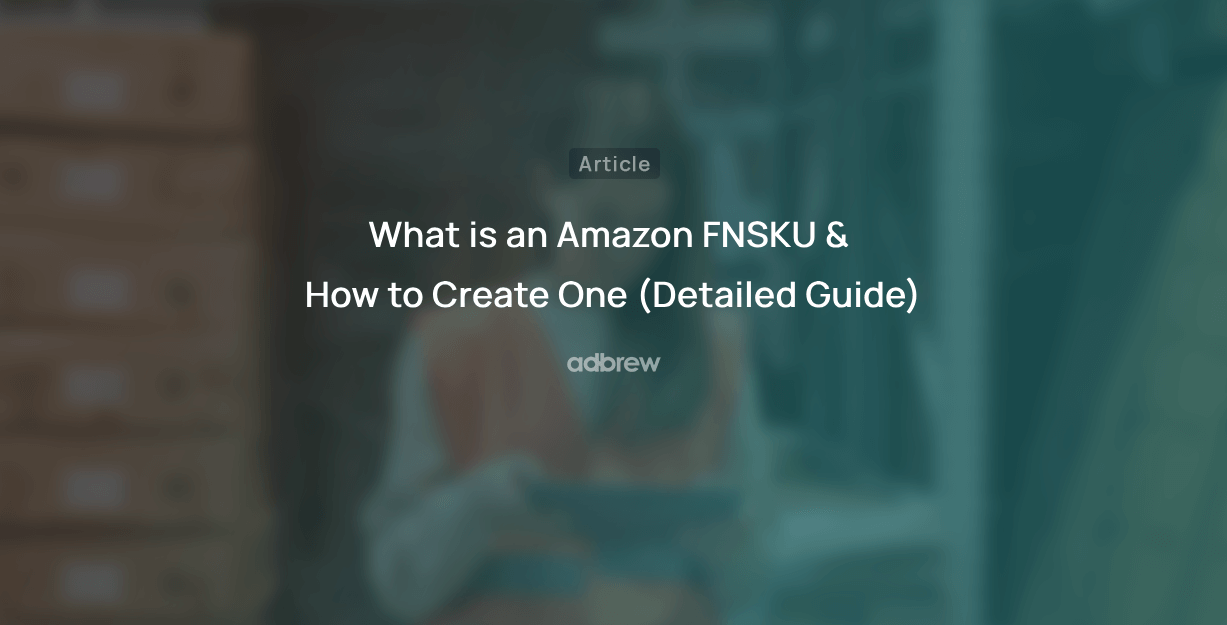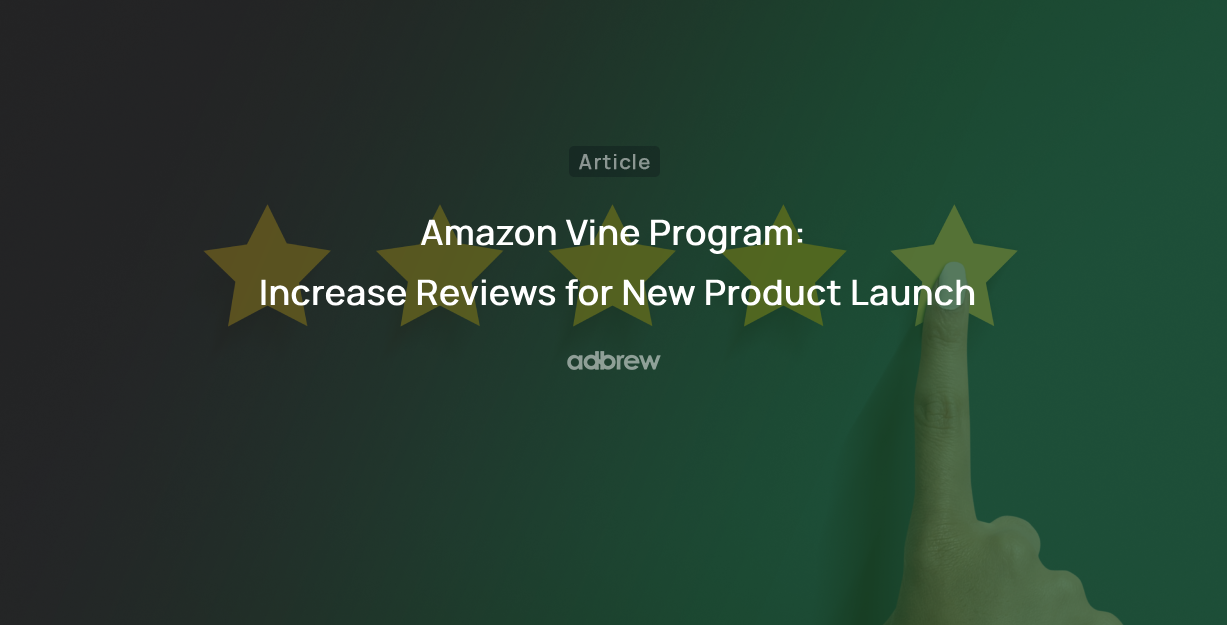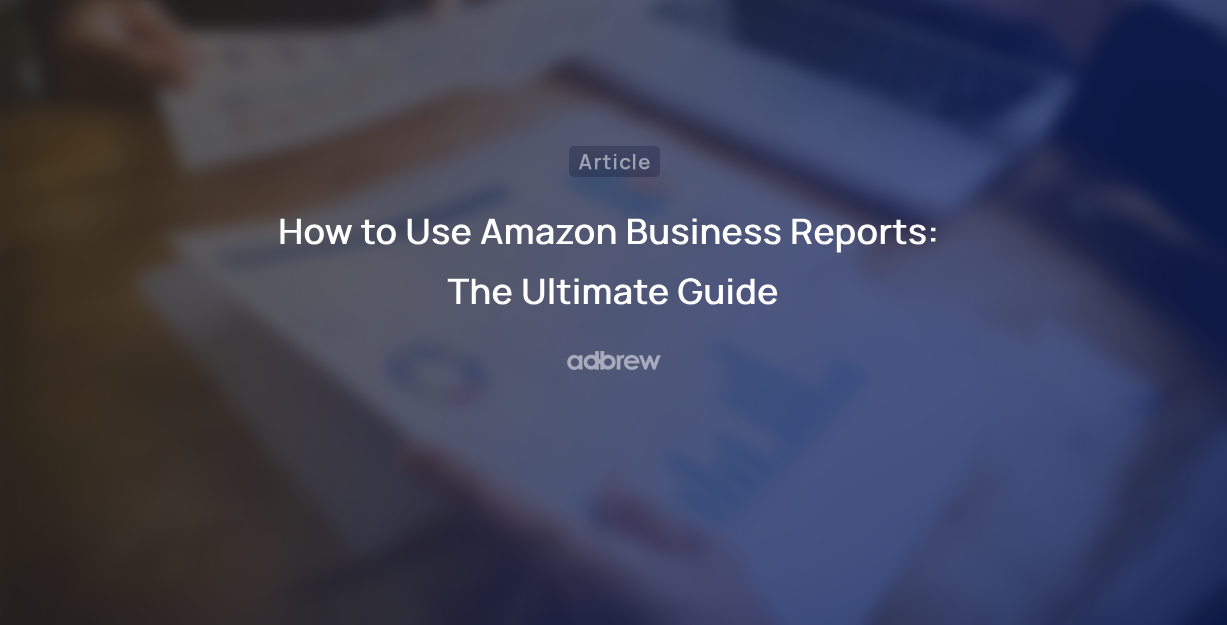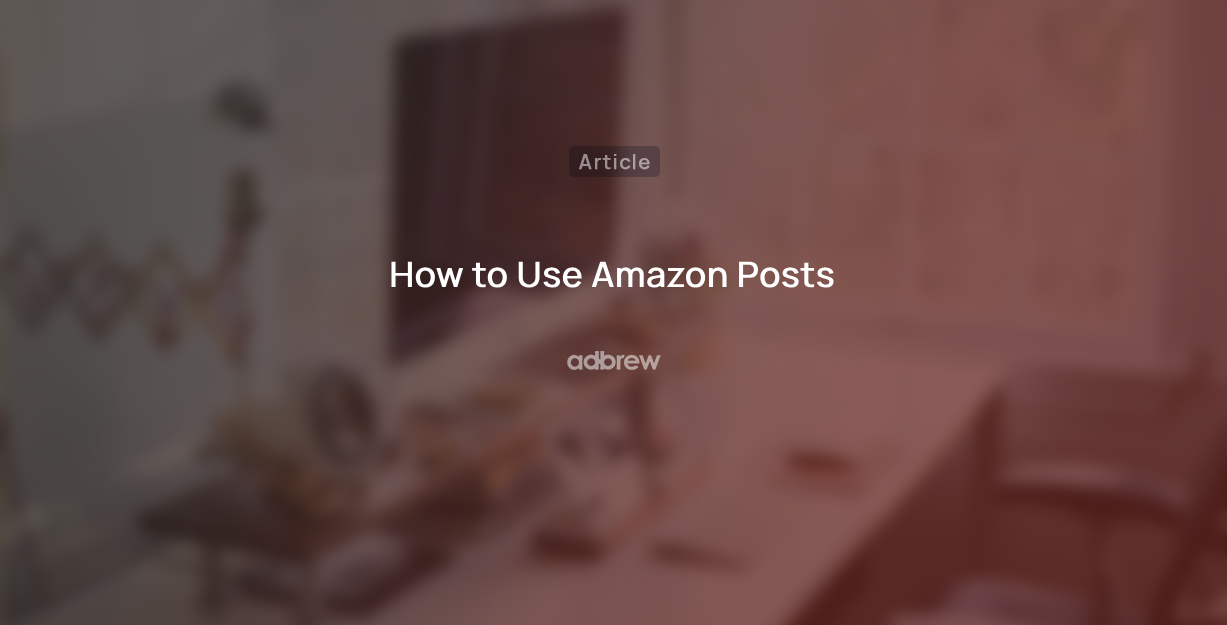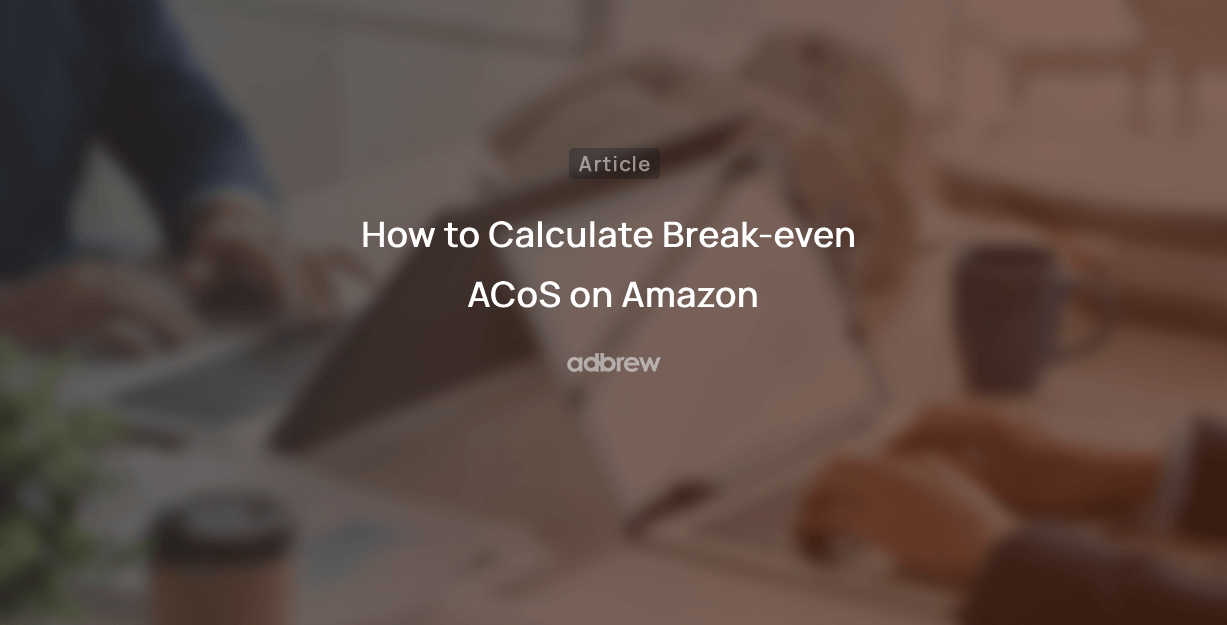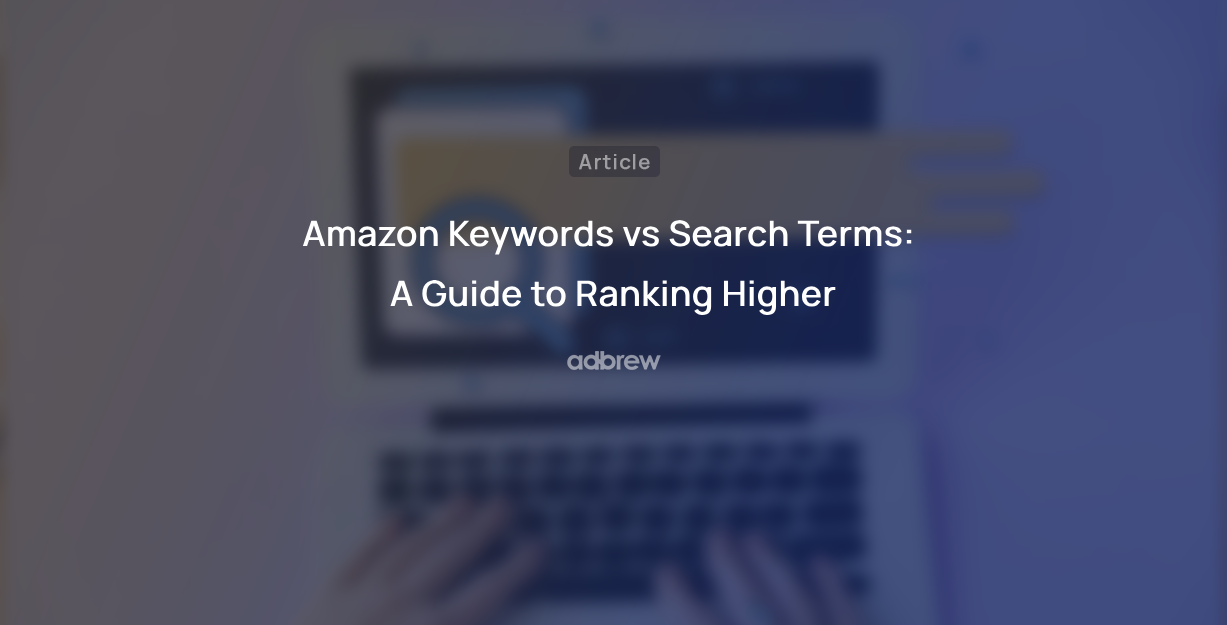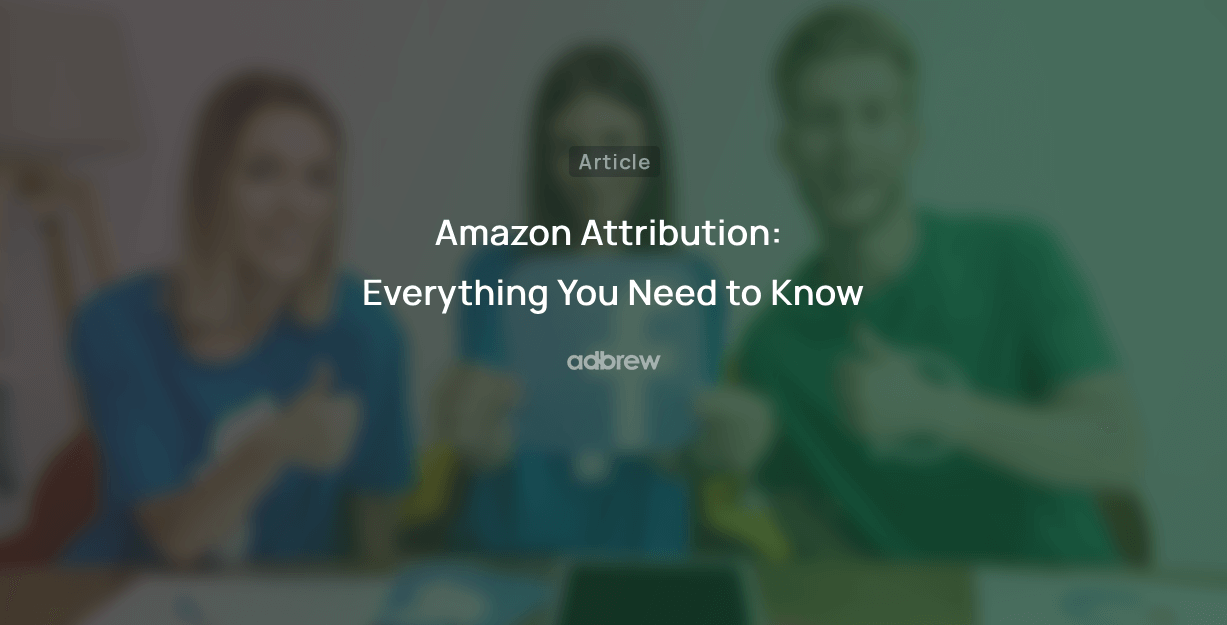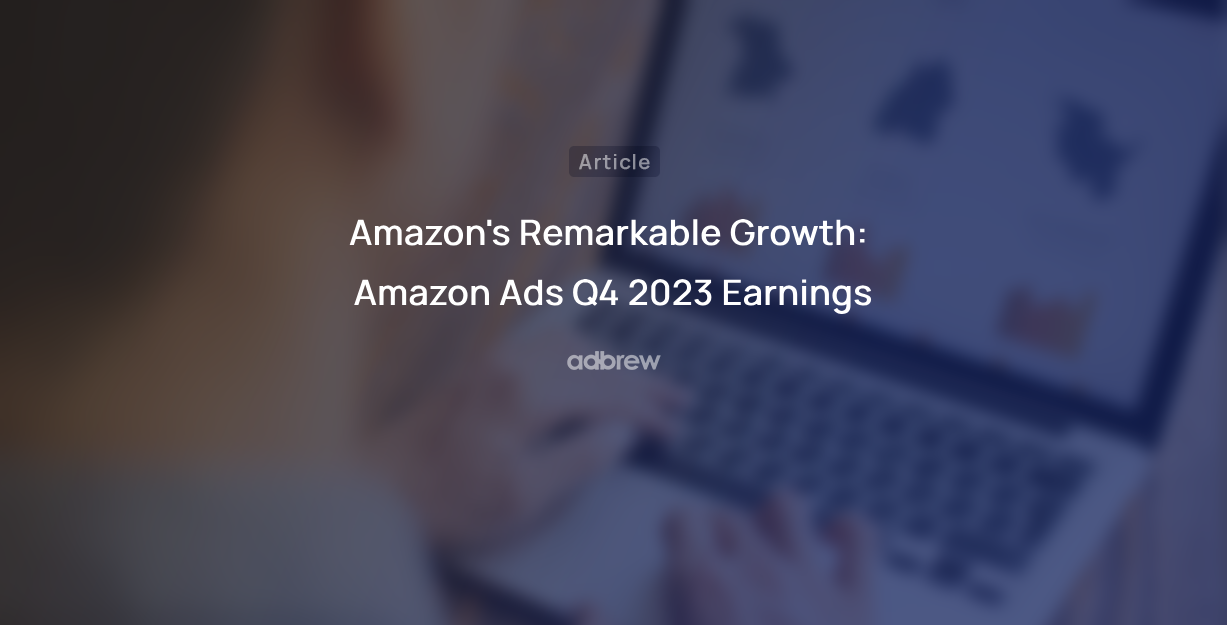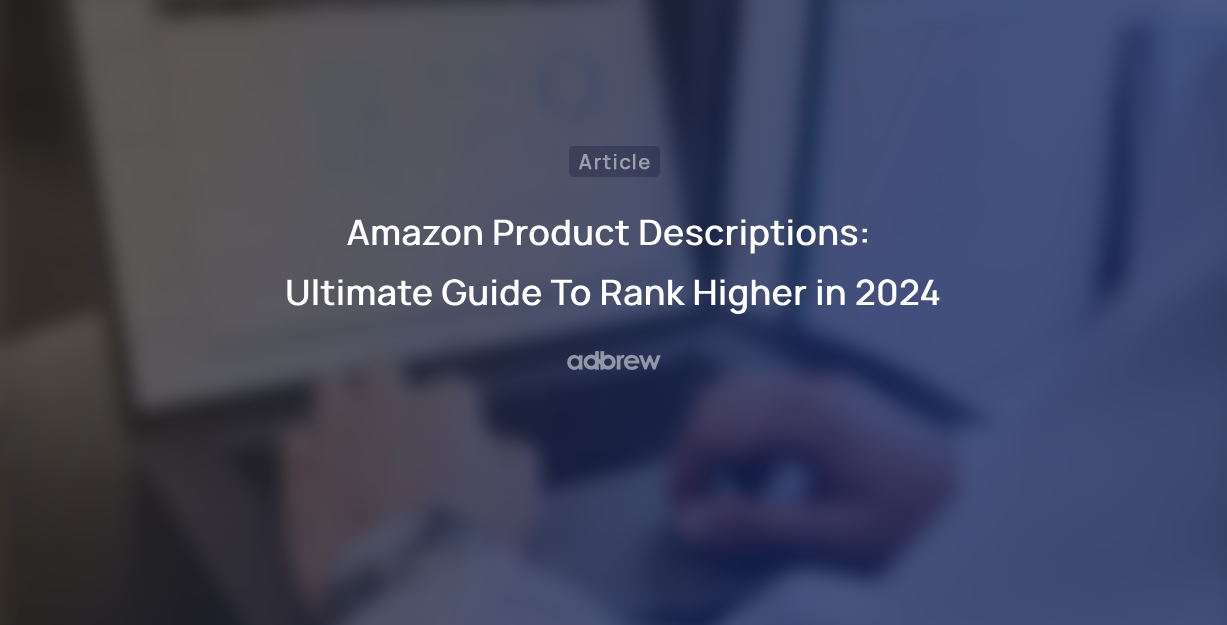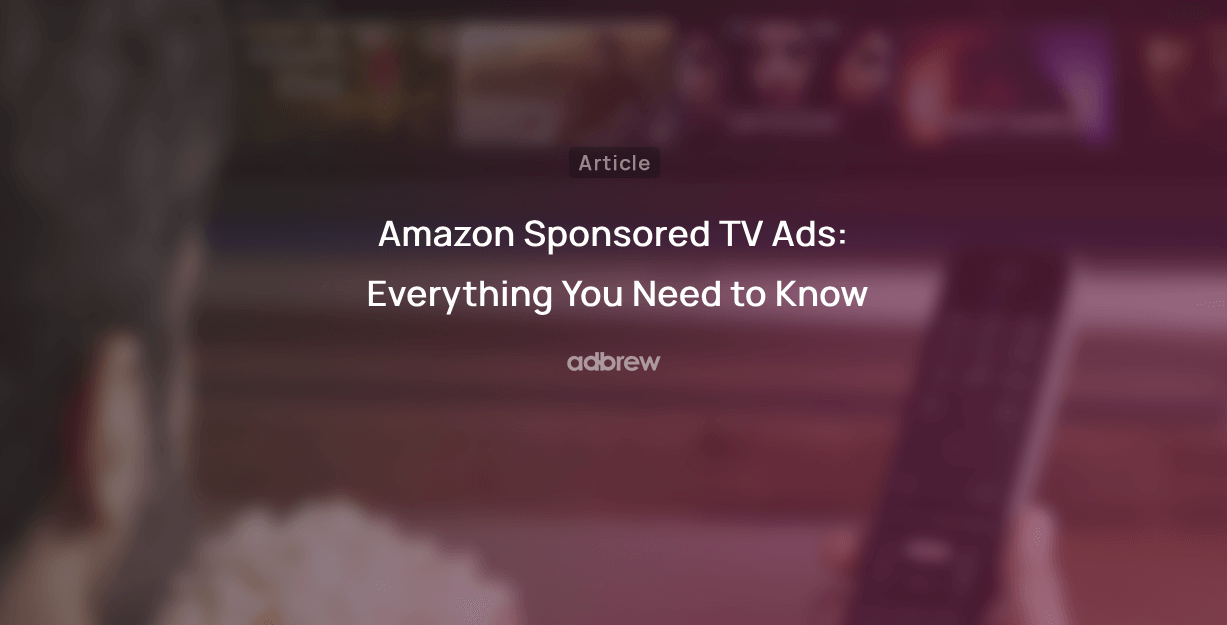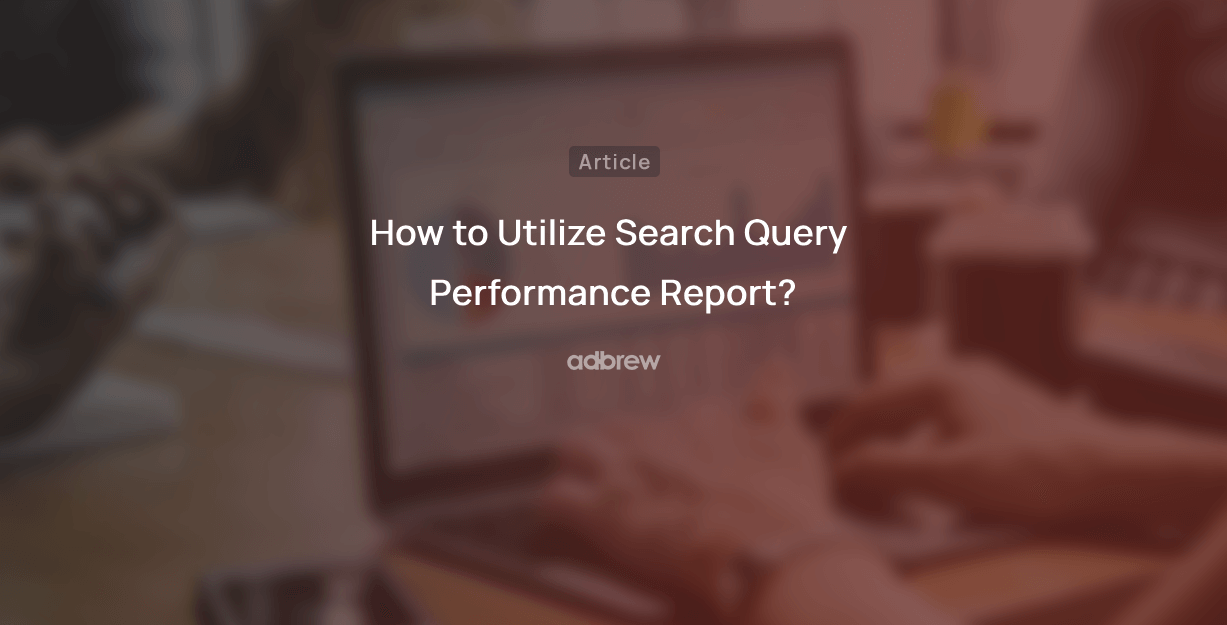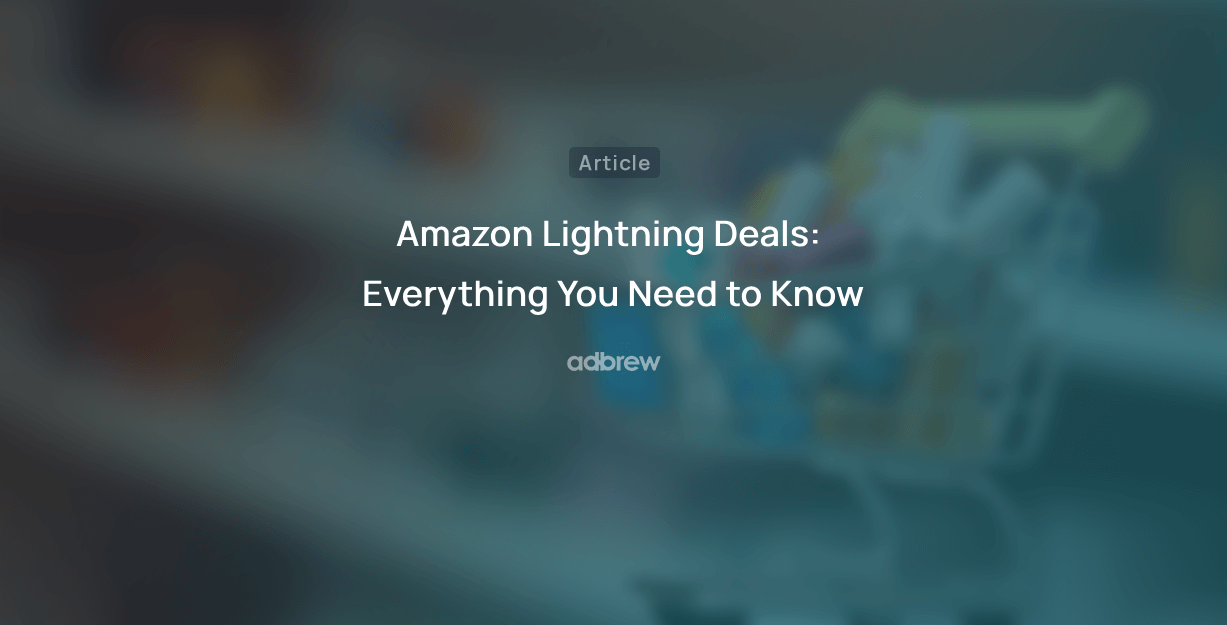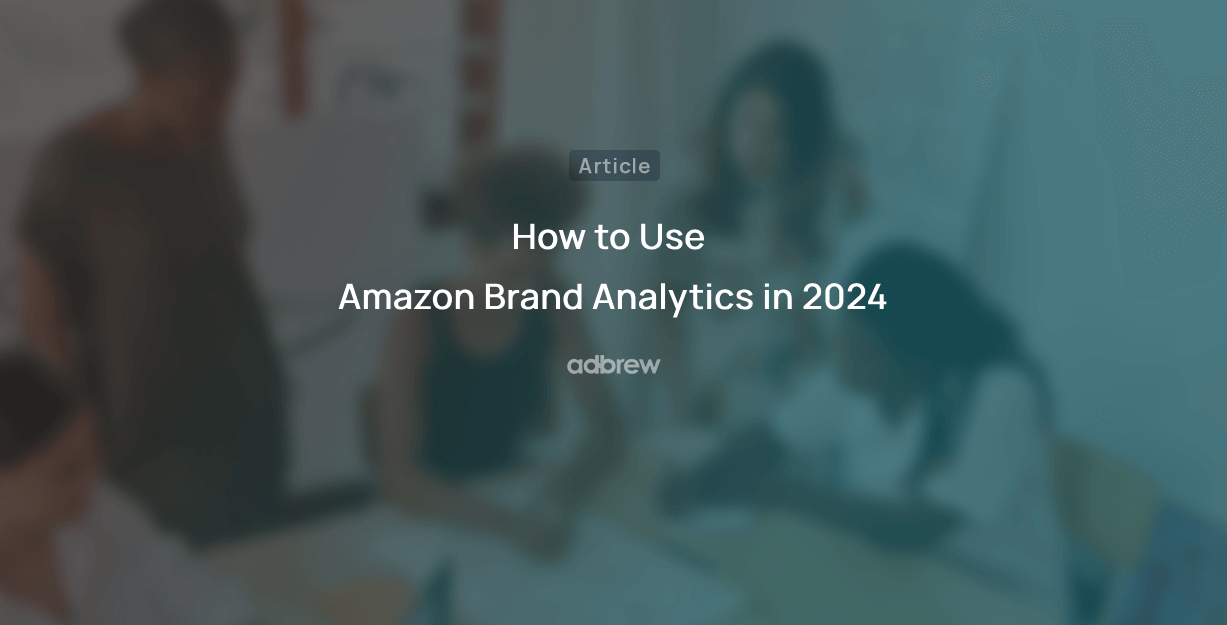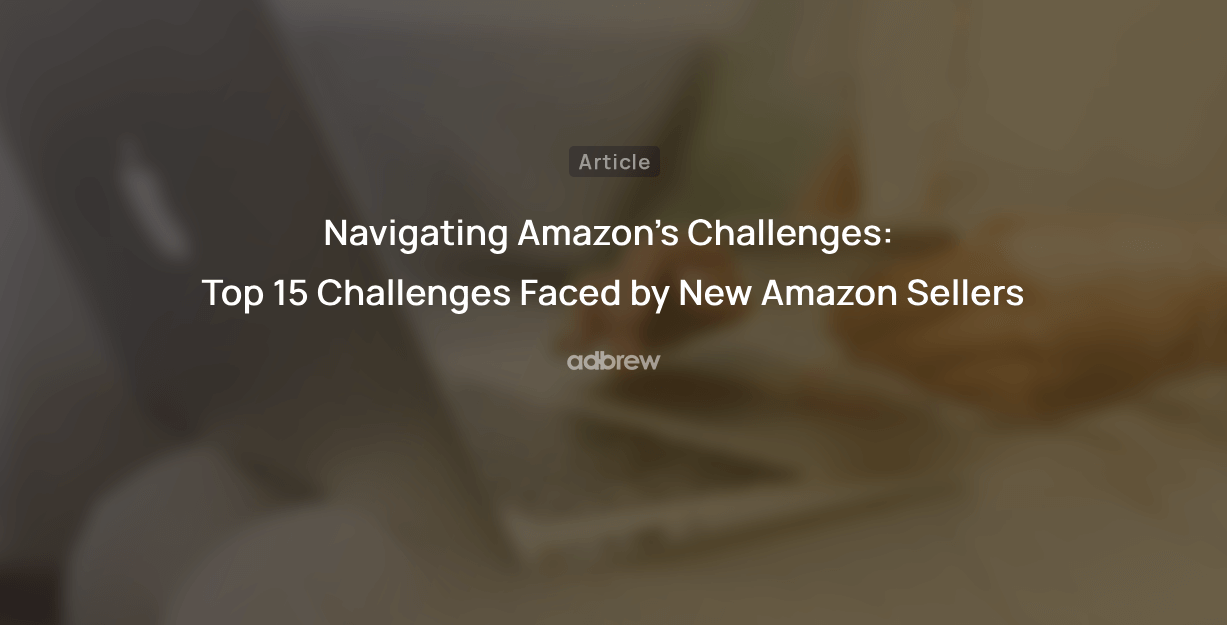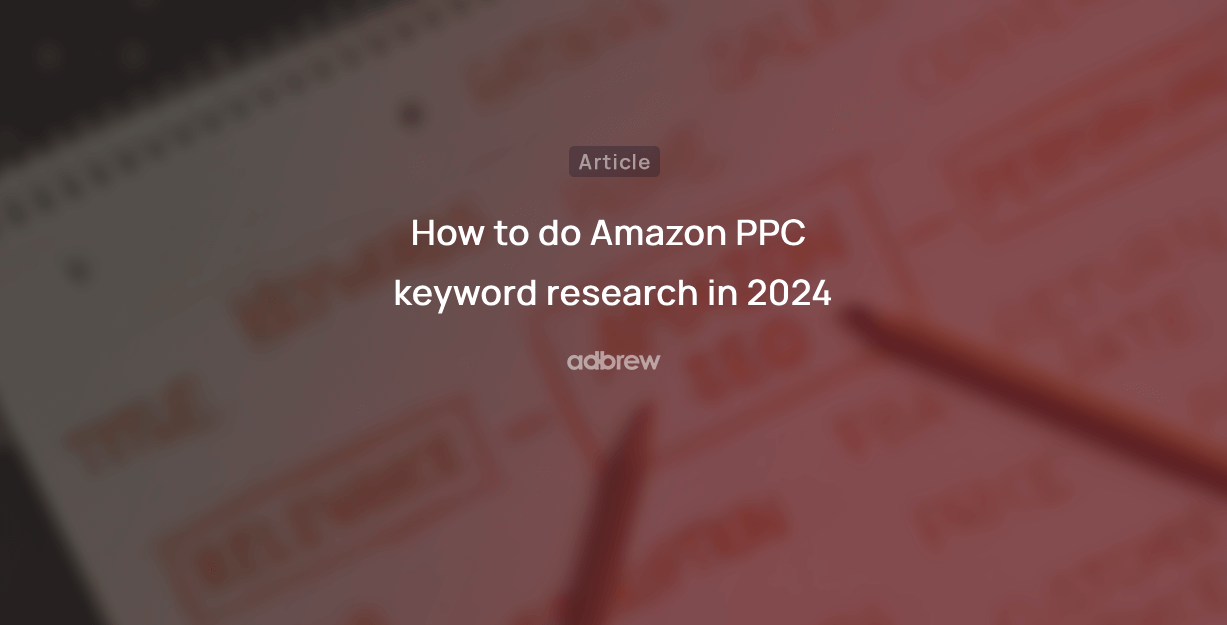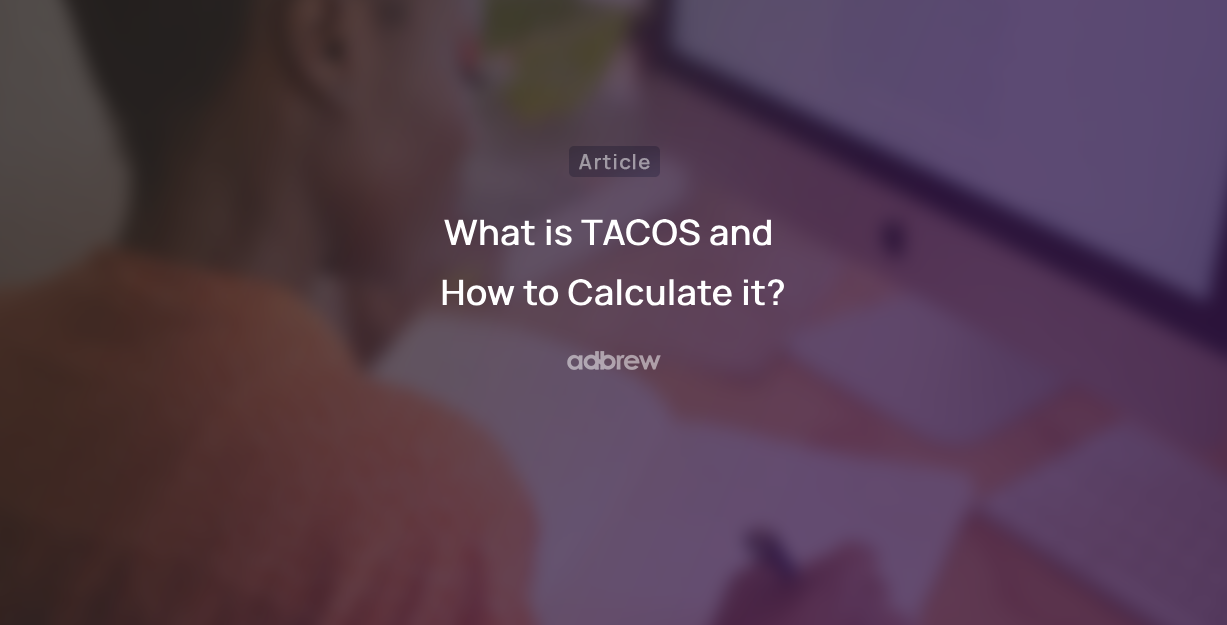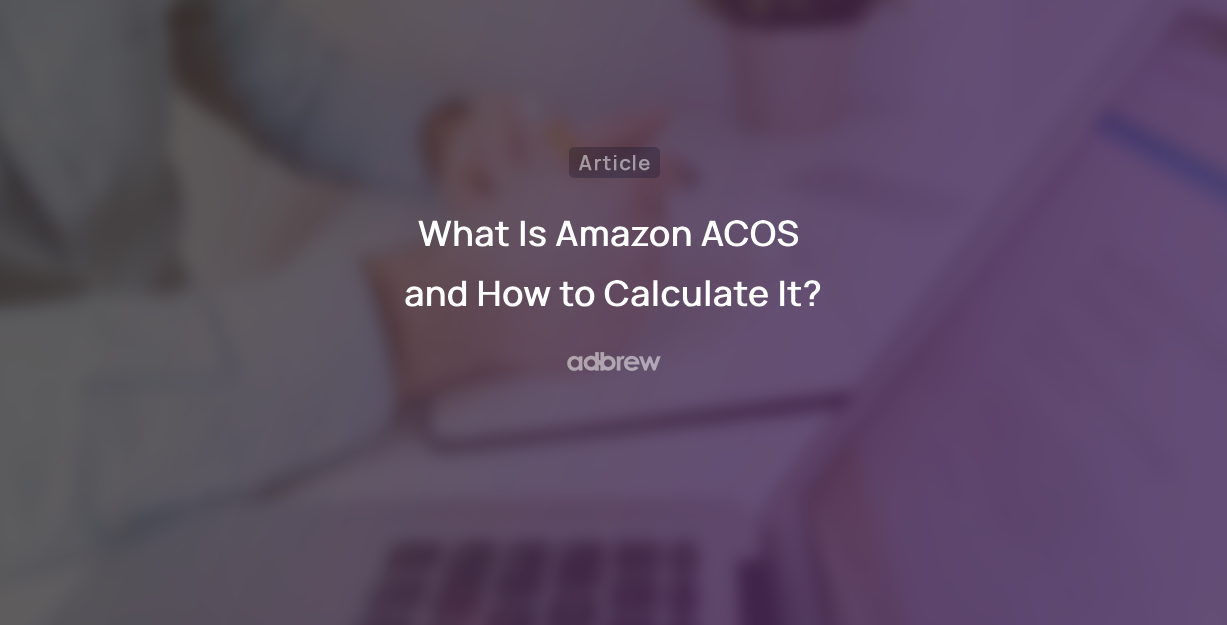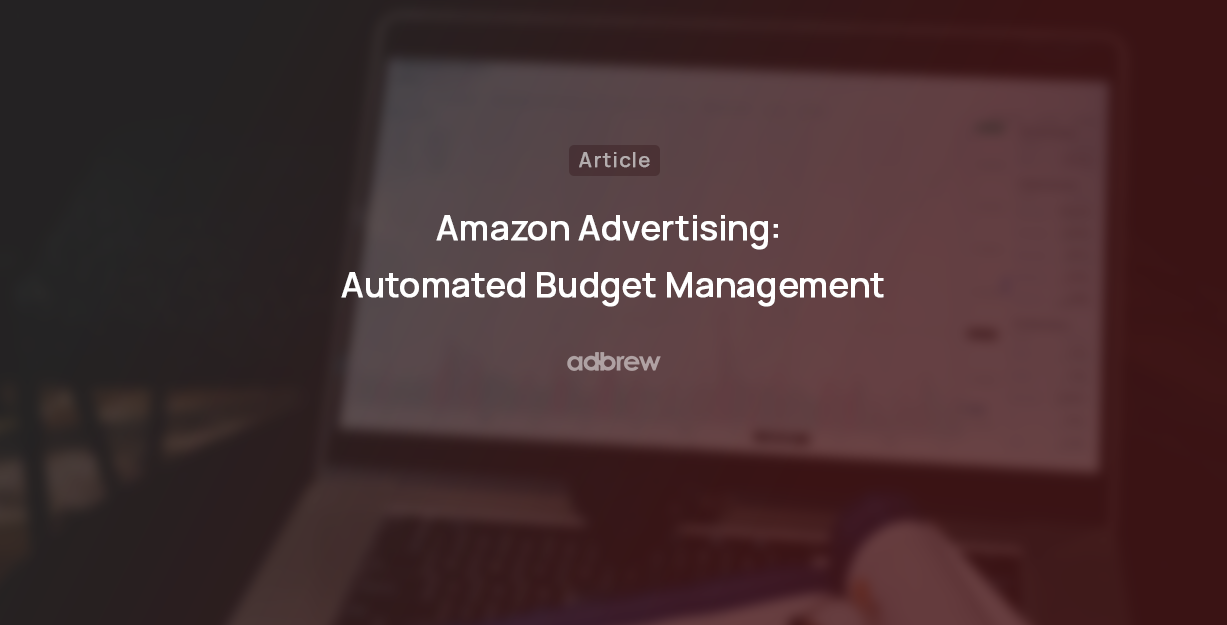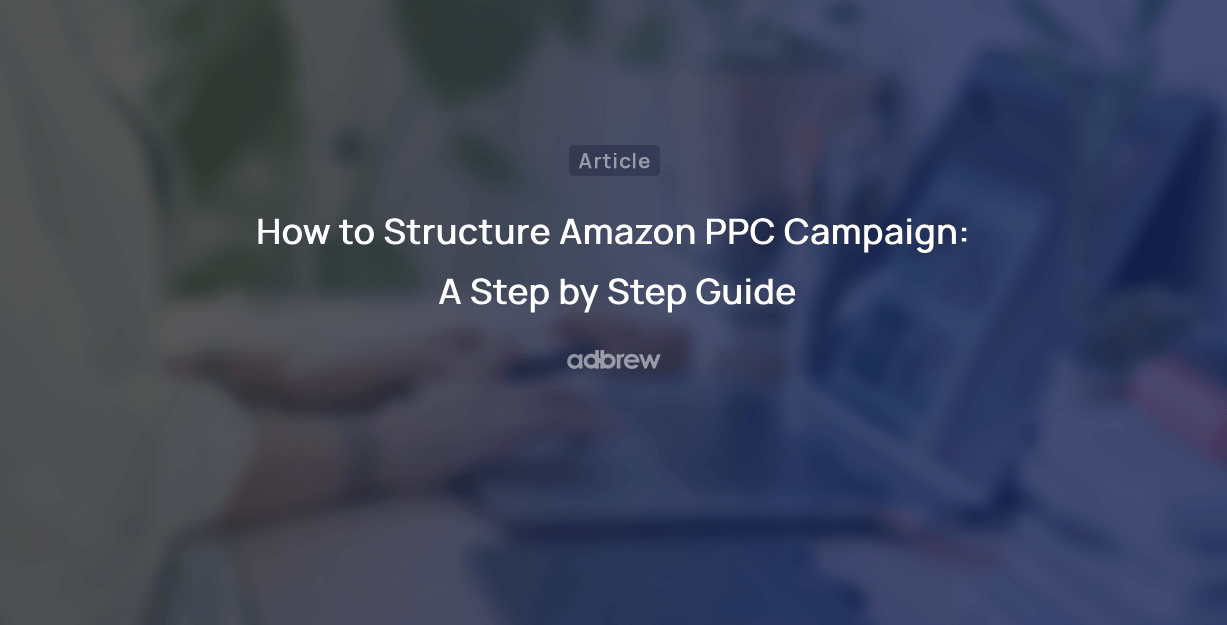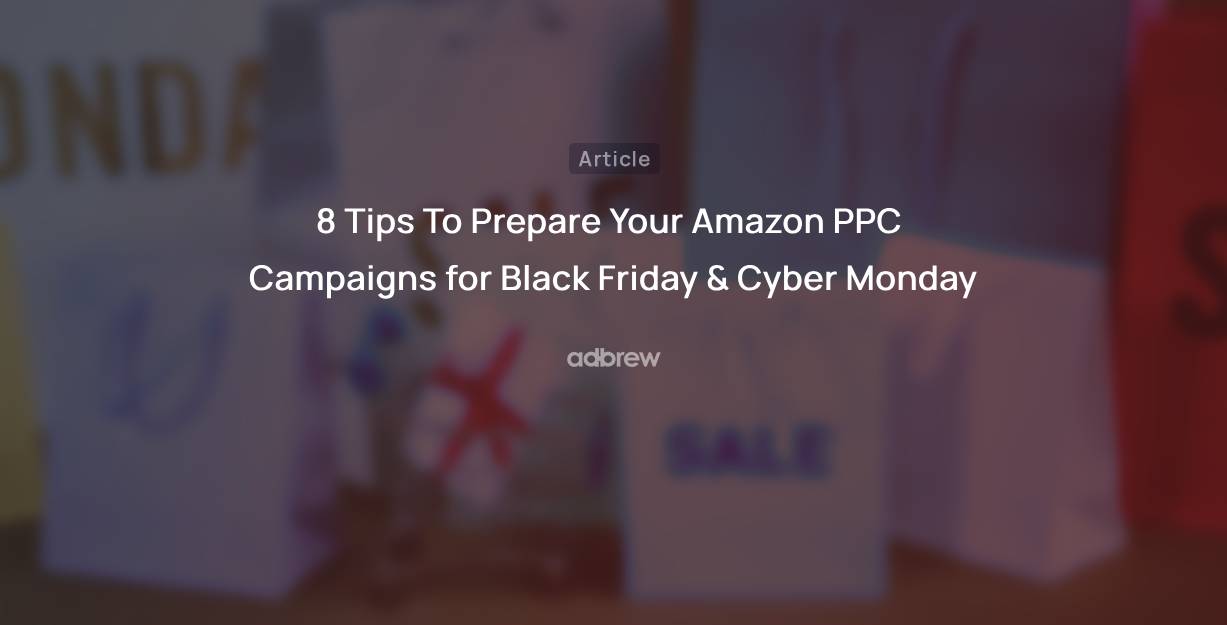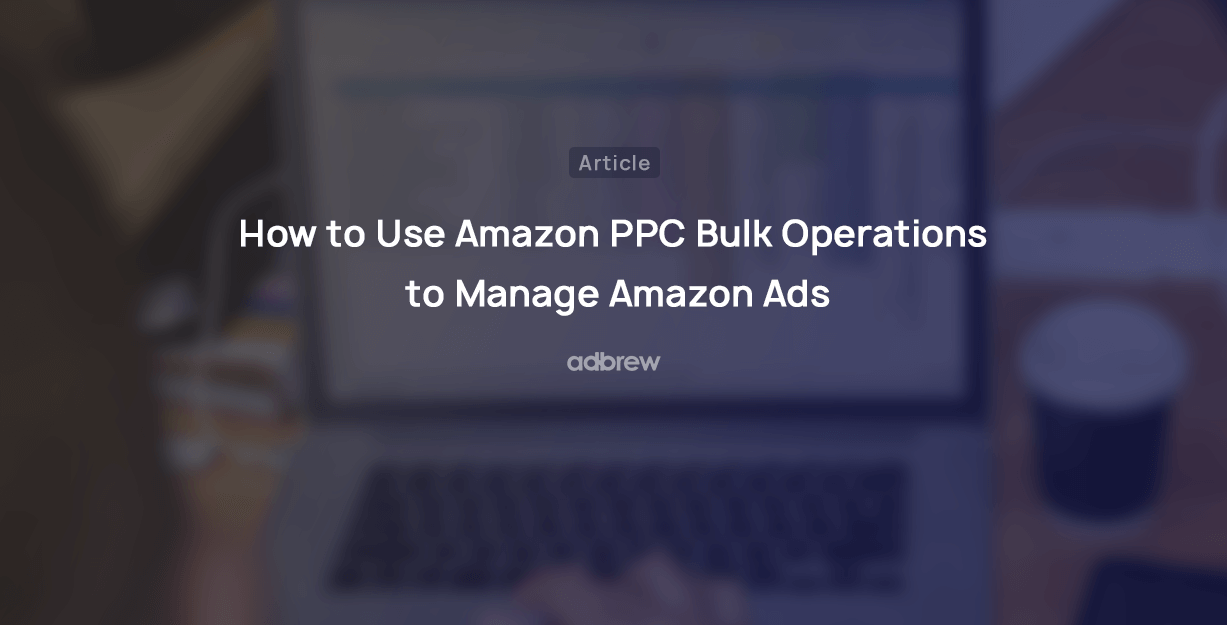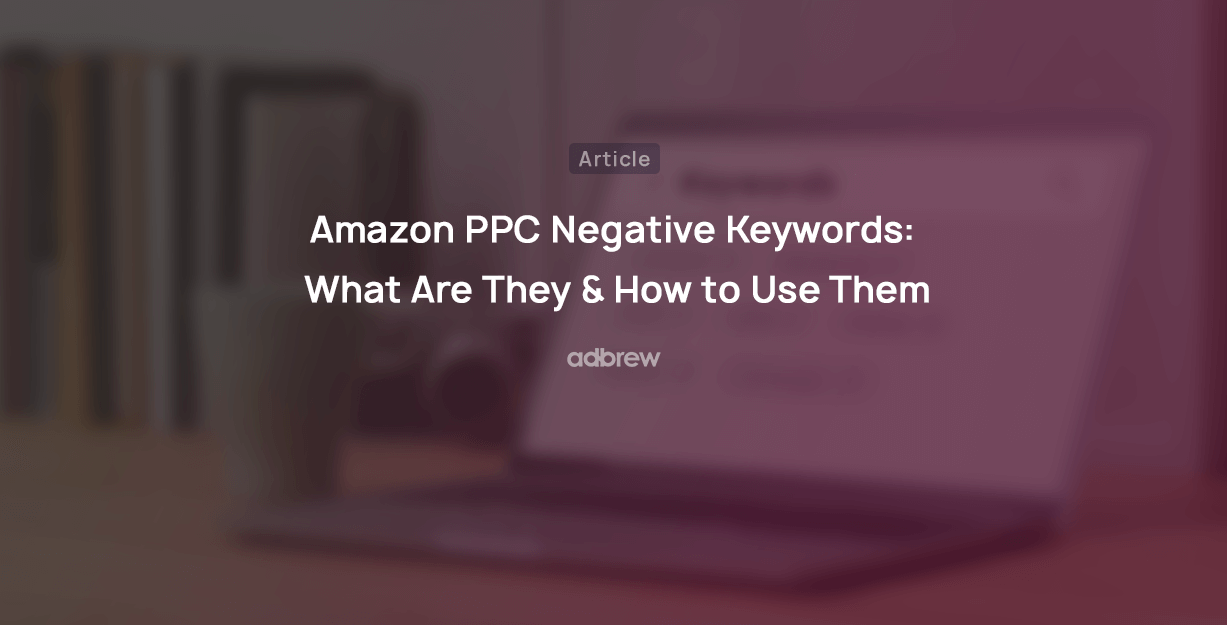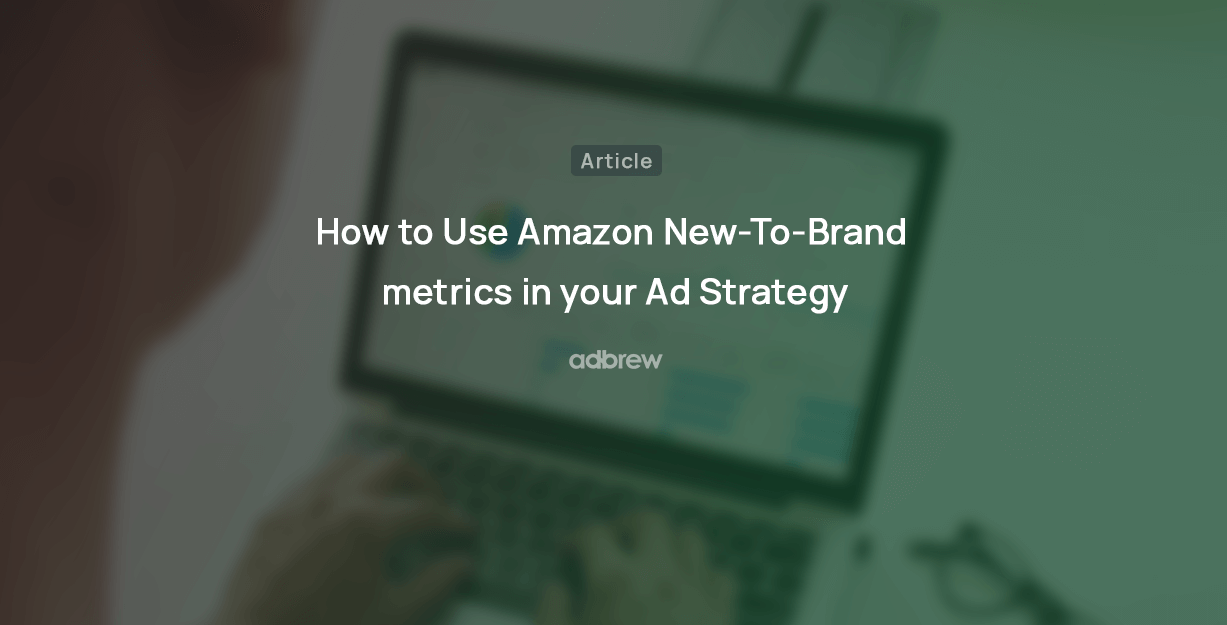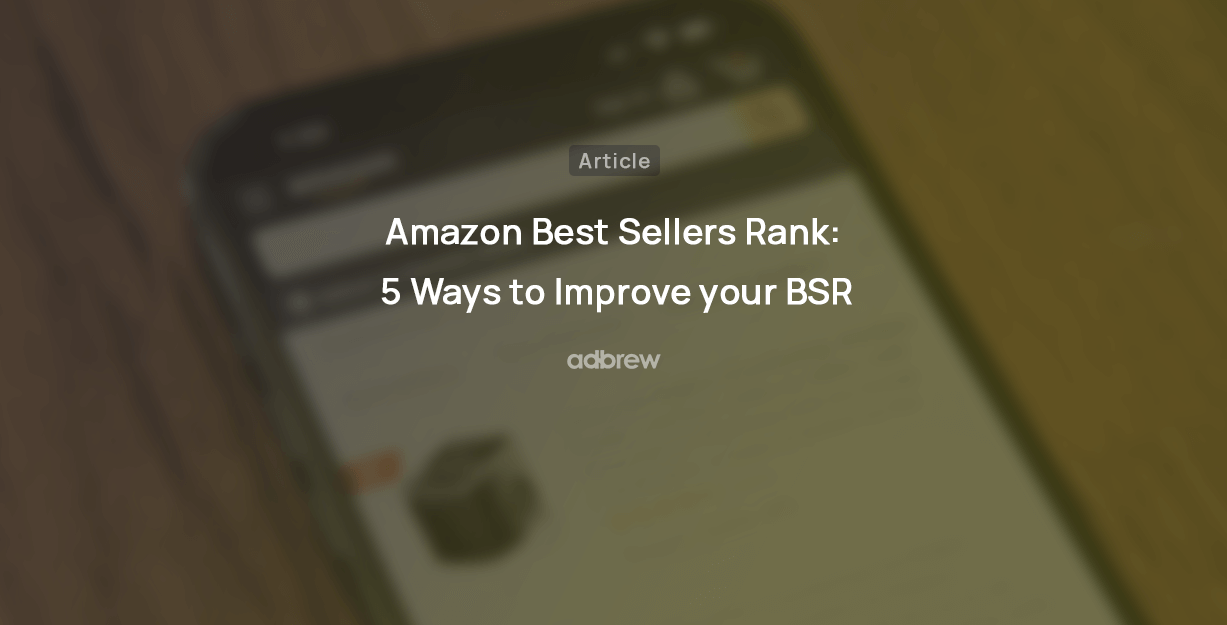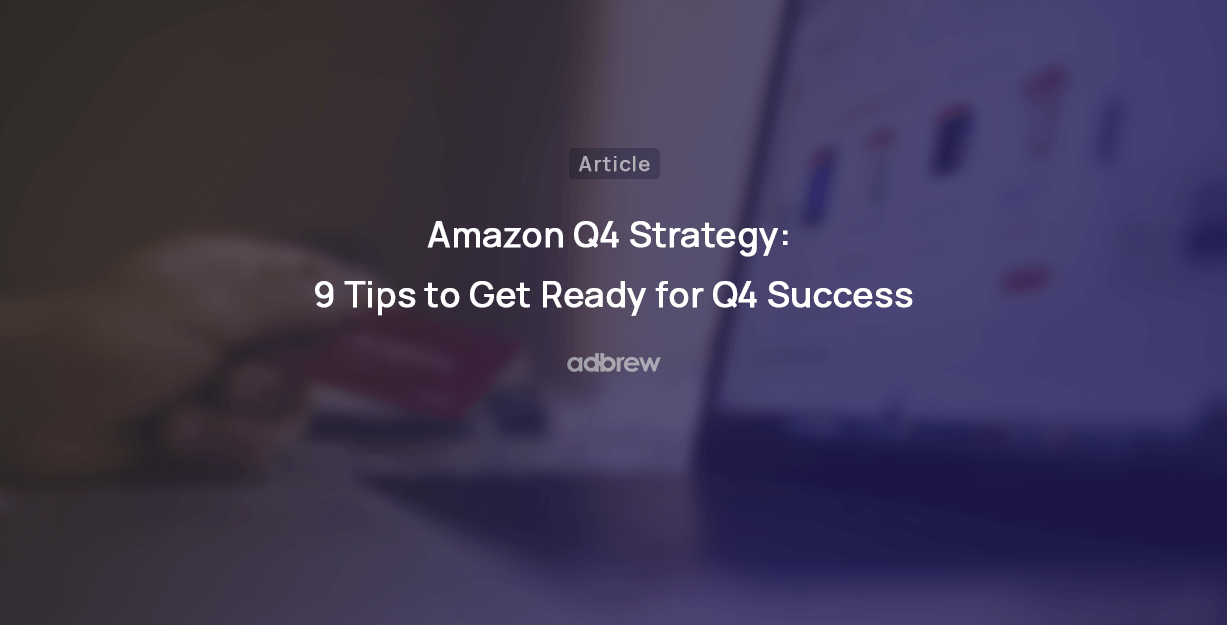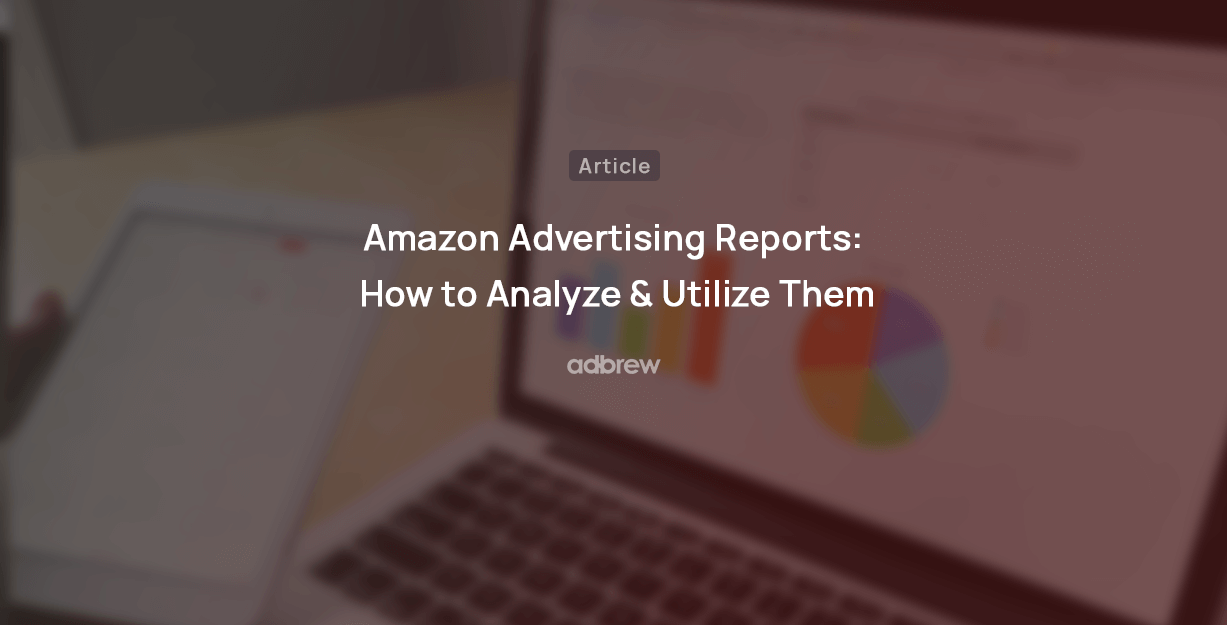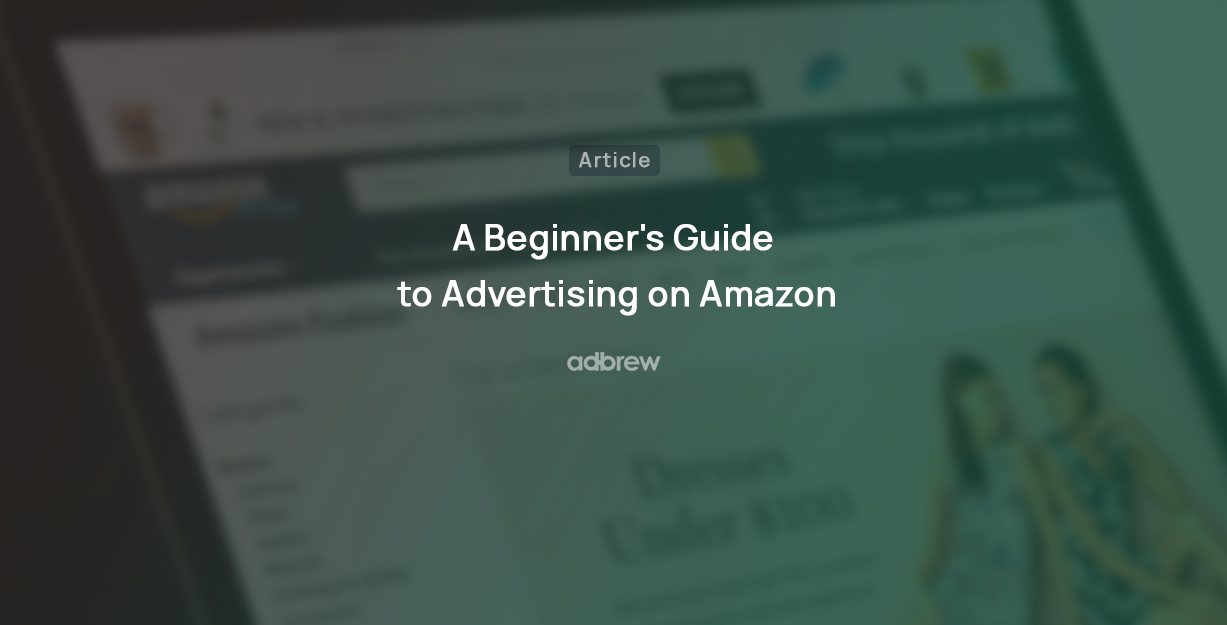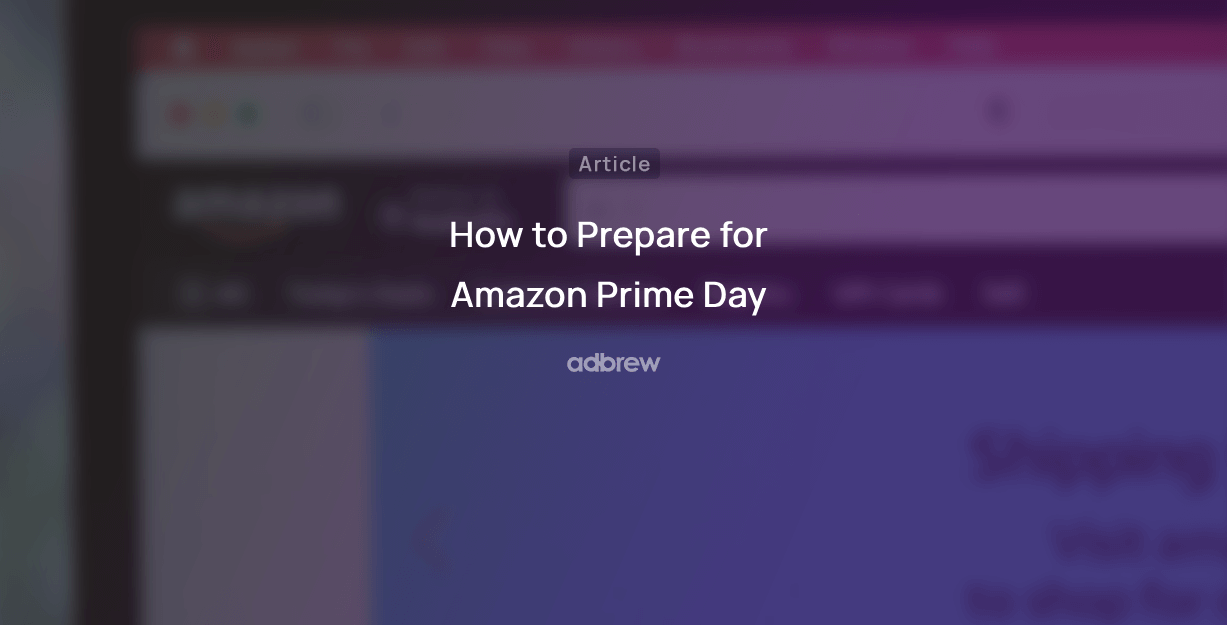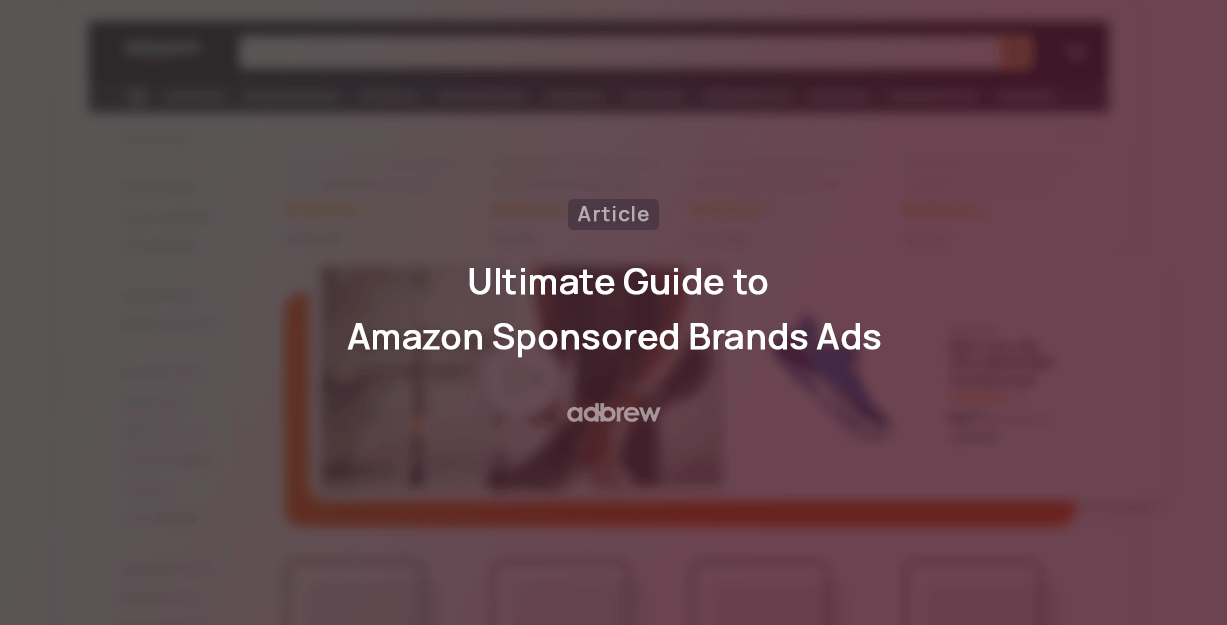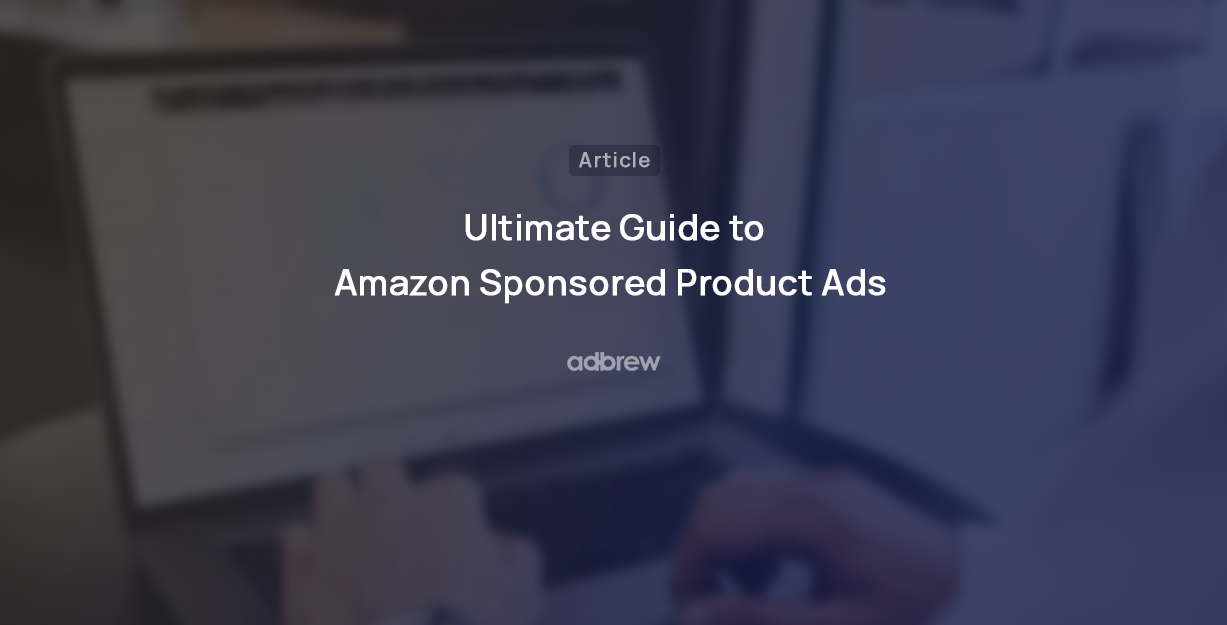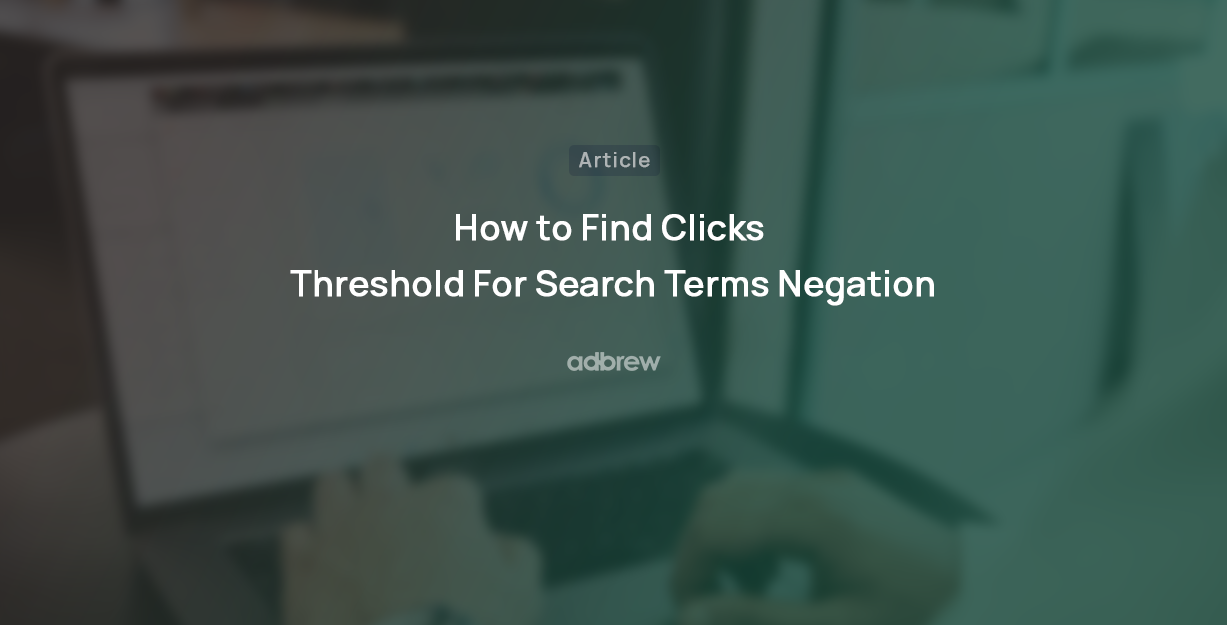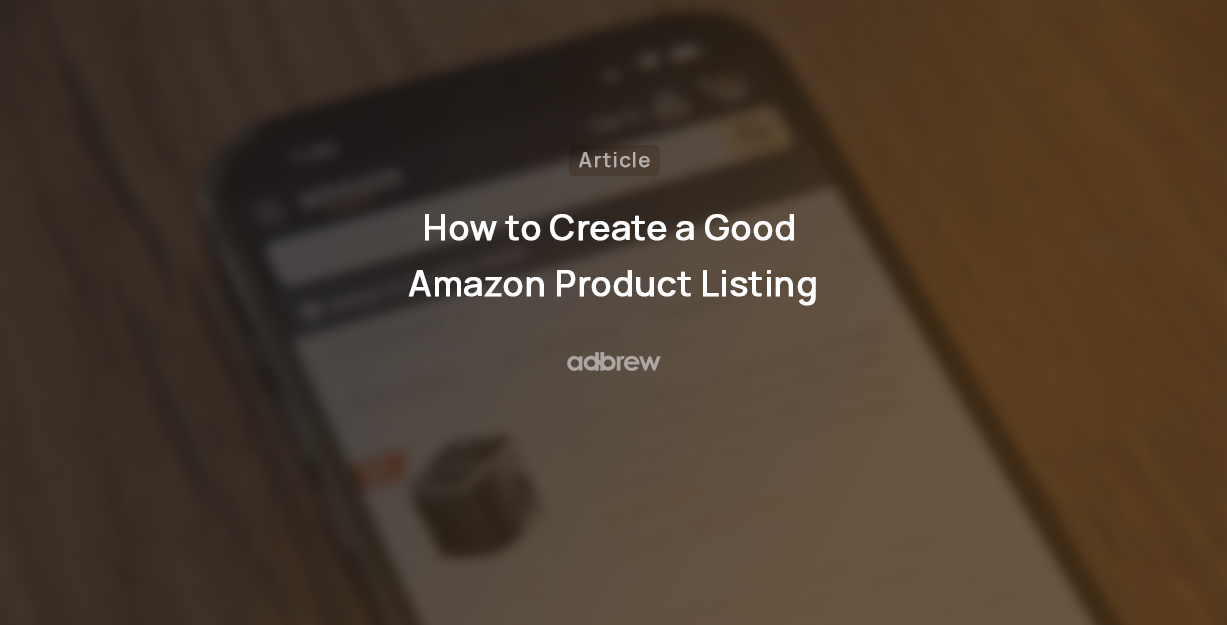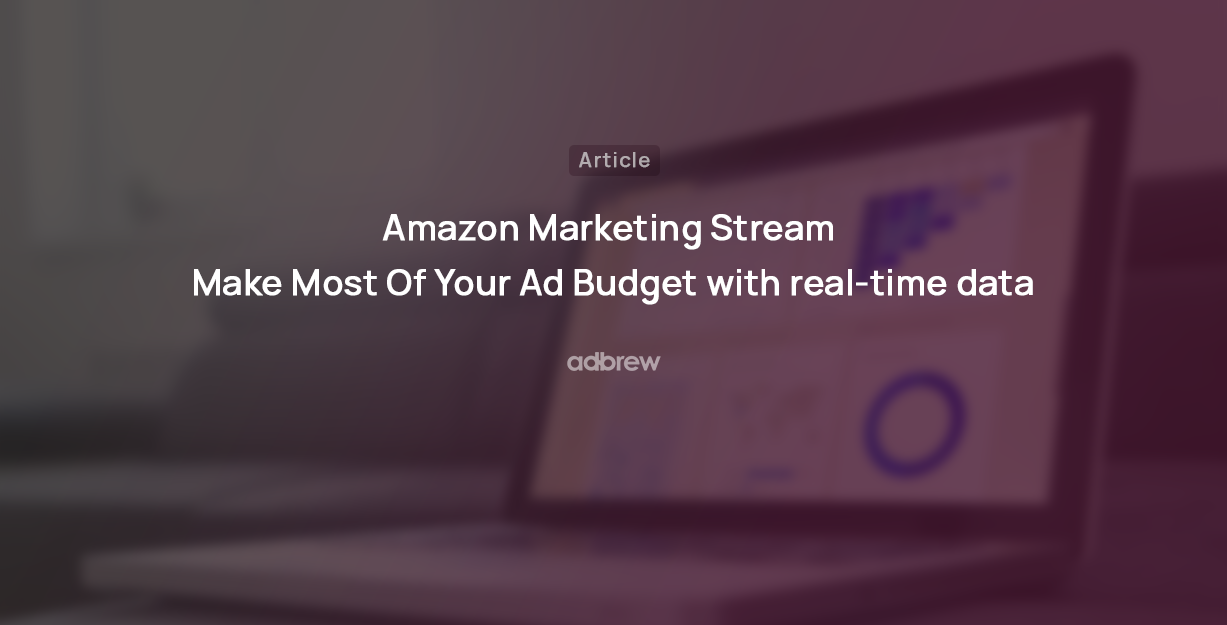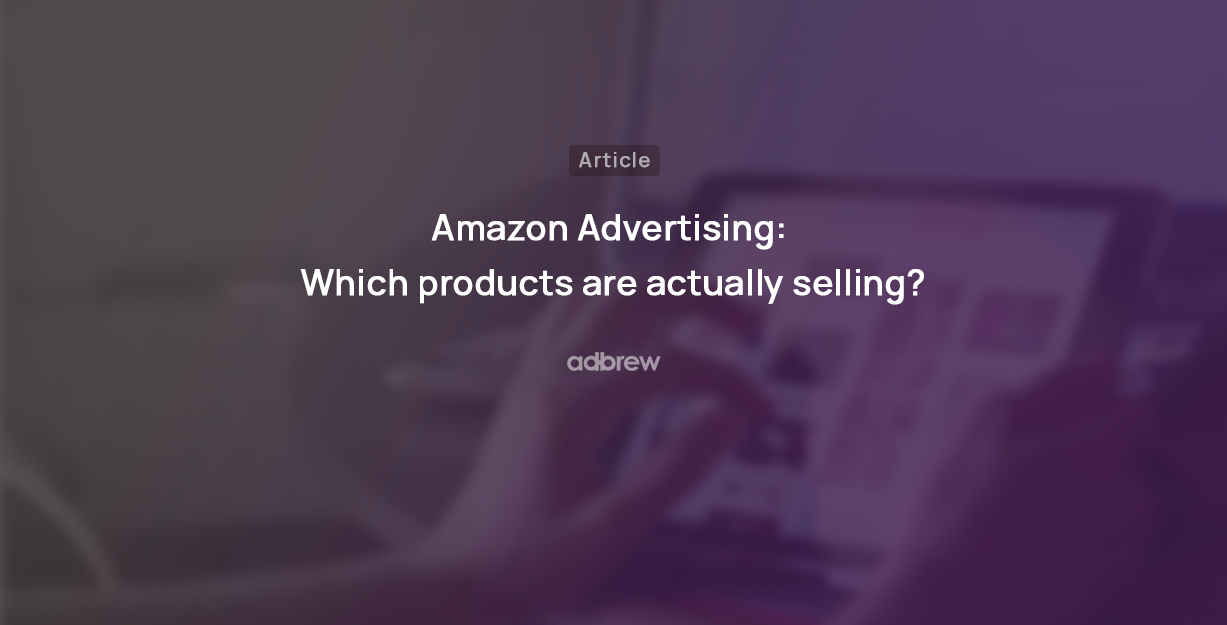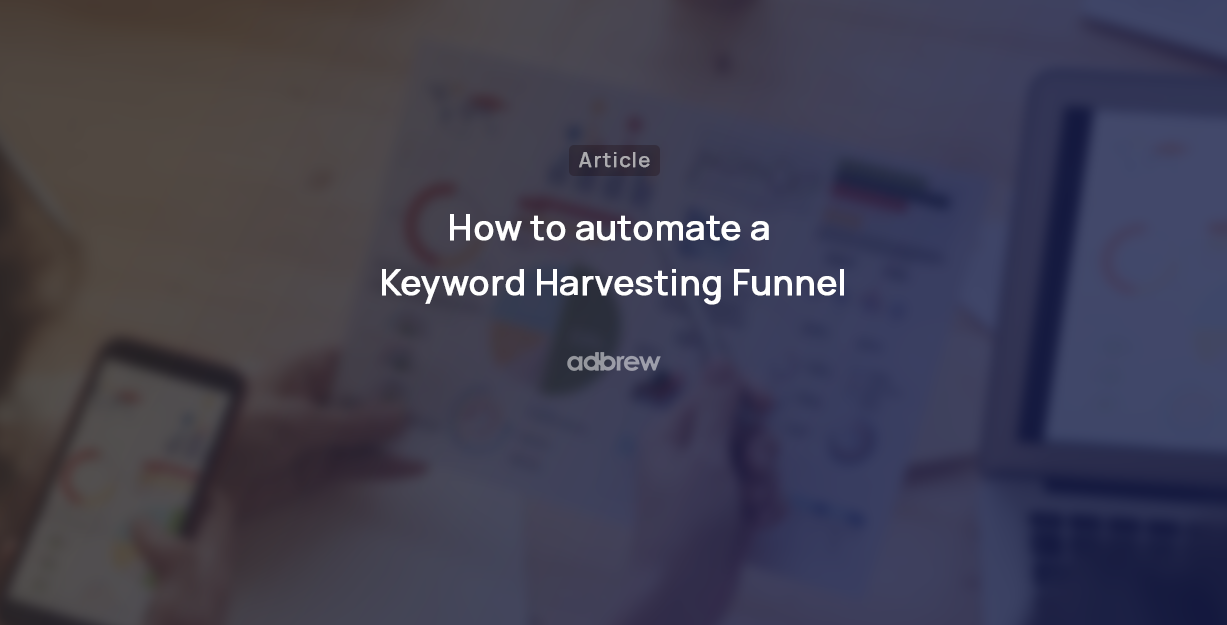
In the fierce Amazon advertising domain, where competition rises and costs increase, understanding and keeping track of the right metrics for your Amazon ads is crucial.
One essential metric for your Amazon ads is the Advertising Cost of Sales (ACOS), which tells you how effective and ineffective your ad campaigns are based on business objectives.
In this blog post, we will discuss what ACOS is on Amazon, how to calculate ACOS, how to improve it, and more.
What is Amazon ACOS?
ACOS stands for Advertising Cost of Sales. It’s a metric that is used to measure the performance and effectiveness of advertising campaigns on Amazon, particularly within Amazon Sponsored Products, Sponsored Brands, and Sponsored Display ads. ACoS calculates the ratio of advertising spend to the attributed sales generated from that advertising spend.
How is ACOS Calculated?
Amazon Advertising Cost of Sales (ACOS) is calculated by dividing the advertising spend by the attributed sales and multiplying the result by 100. In mathematical terms, ACOS is expressed as (Advertising Spend ÷ Sales from Advertising) x 100.
For example, if you spent $50 to generate ad sales worth $100, your ACOS would be 50%.
A lower ACOS indicates higher efficiency, suggesting that a smaller percentage of the sales revenue was used to drive sales.
What Impacts ACOS on Amazon?
1. Competitiveness (CPC): Competitiveness in a category plays a big role in the ACOS of your product. If a lot of brands are aggressively bidding in your category, that would drive the CPC up and eventually lead to a high ACOS due to the higher costs incurred to drive an order.
2. Conversion Rate: The conversion rate is another crucial factor that influences your product’s ACOS. A higher conversion rate typically means a better ACOS because you need fewer clicks to drive an order.
3. Relevancy of Keywords: The more relevant keywords your product is advertised for, the better conversion rate and eventually ACOS you can expect. For instance, if you are selling gluten-free white bread, then the conversion rate for the most relevant term, “gluten-free white bread,” is going to be much better than for “white bread,” as the first keyword’s relevancy closely matches the advertised product.
What is the difference between ACOS and ROAS?
A universally accepted definition of an ideal Advertising Cost of Sales (ACOS) doesn’t exist, as its assessment depends on several influencing factors. When determining the optimal average ACOS for your brand, consider the following factors:
- Profit Margins: ACOS should align with your profit margins. A “good” ACOS differs based on the product’s profitability. Higher-margin products can afford a higher ACOS compared to lower-margin ones.
- Product Lifecycle: A new product might have a higher ACOS initially as you invest in advertising to gain visibility. Over time, as it gains traction and organic sales increase, a lower ACOS might be achievable.
- Competitive Landscape: ACOS varies across categories and depends on the competitiveness within each. Highly competitive categories might have higher ACOS benchmarks due to increased ad costs.
- Advertising Strategy and Goals: The ACOS may vary depending on the campaign objective. In instances where the primary goal is to raise awareness, the ACOS is likely to be higher. Conversely, campaigns focused on maximizing efficiency tend to yield better ACOS.
- Seasonality and Trends: ACOS can fluctuate based on seasonal demand and trends. What might be a good ACOS during peak seasons could vary significantly during off-peak times.
- Target Audience and Product Demand: Understanding your target audience and their demand for the product influences what constitutes a good ACOS. High-demand products might justify a higher ACOS.
- Campaign Type and Goals: Different ad campaign types (such as Sponsored Products, Sponsored Brands, or Sponsored Display) might have varying ACOS thresholds based on their specific goals and performance metrics.
What is the difference between ACOS and ROAS?
ACOS (Advertising Cost of Sales) measures what percentage of sales revenue you have spent on Ads to drive those sales.
On the other hand, ROAS (Return on Advertising Spend) measures how much revenue you make in sales for each dollar you spend on ads.
For instance, if you spent $50 to drive $100 in sales, ACOS would be 50%, and ROAS would be 2x.
Both metrics are essentially used for the same thing, measuring the effectiveness of your ad spend.
What is a Good ACOS on Amazon?
A universally accepted definition of an ideal Advertising Cost of Sales (ACOS) doesn’t exist, as its assessment depends on several influencing factors. When determining the optimal ACOS for your brand, consider the following factors:
- Profit Margins: ACOS should align with your profit margins. A “good” ACOS differs based on the product’s profitability. Higher-margin products can afford a higher ACOS compared to lower-margin ones.
- Product Lifecycle: A new product might have a higher ACOS initially as you invest in advertising to gain visibility. Over time, as it gains traction and organic sales increase, a lower ACOS might be achievable.
- Competitive Landscape: ACOS varies across categories and depends on the competitiveness within each. Highly competitive categories might have higher ACOS benchmarks due to increased ad costs.
- Advertising Strategy and Goals: The ACOS may vary depending on the campaign objective. In instances where the primary goal is to raise awareness, the ACOS is likely to be higher. Conversely, campaigns focused on maximizing efficiency tend to yield better ACOS results.
- Seasonality and Trends: ACOS can fluctuate based on seasonal demand and trends. What might be a good ACOS during peak seasons could vary significantly during off-peak times.
- Target Audience and Product Demand: Understanding your target audience and their demand for the product influences what constitutes a good ACOS. High-demand products might justify a higher ACOS.
- Campaign Type and Goals: Different ad campaign types (such as Sponsored Products, Sponsored Brands, or Sponsored Display) might have varying ACOS thresholds based on their specific goals and performance metrics.
How to Find the Break-even ACOS?
Break-even ACoS (Advertising Cost of Sales) on Amazon is the point where your advertising costs are covered by the revenue generated from your sales, resulting in neither profit nor loss.
To calculate break-even ACoS, add the Amazon fees per sale, product cost per sale, and desired profit margin to the revenue per sale. Divide the total by the revenue per sale and multiply by 100 to get the percentage.
This percentage represents the maximum ACoS you can afford without operating at a loss. By monitoring and adjusting your advertising strategy based on this metric, you can ensure a sustainable and profitable campaign.
How to Optimize ACOS on Amazon?
There’s always continual scope for enhancing your campaign’s ACOS, regardless of your current ACOS. Here are some of the most popular ways to optimize your ACOS:
- Keyword Optimization: Refine and optimize your keyword strategy by focusing on high-converting, relevant keywords. Regularly review and adjust your keyword selection to target more specific, less competitive, yet converting terms. This enhances the relevance of your ads to potential customers, potentially lowering ACoS by improving ad performance.
- Optimize Bids: A proper bid management system is super important to optimize the ACOS of your campaigns. You need to adjust bids for high-performing keywords to enhance visibility and sales while reducing bids for underperforming keywords to minimize costs.
- Product Listing Optimization: Enhance your product listings by improving product images, descriptions, titles, and bullet points. A compelling and informative product page increases the likelihood of conversions, potentially reducing ACoS by improving the conversion rate.
- Negative Keyword Implementation: Utilize negative keywords to filter out irrelevant searches triggering your ads. By excluding irrelevant or non-converting search terms, you can focus your ad spend on more relevant and potentially higher-converting searches, thereby reducing wasted ad spend and improving ACOS.
What is TACOS (Total Advertising Cost of Sales)?
While ACOS measures the correlation between ad spend and ad revenue, TACOS (Total Advertising Cost of Sales) offers a broader perspective by illustrating the correlation between ad spend and overall revenue, combining both organic and ad-attributed sales. It is calculated by dividing the total ad spend by total sales and multiplying by 100.
Ready to get started with Adbrew?
Adbrew provides cutting-edge automation, expertly curated strategies, and data-driven insights for brands to thrive on Amazon.
Conclusion
In conclusion, understanding and managing ACOS (Advertising Cost of Sale) is crucial for assessing the effectiveness of Amazon’s PPC campaigns. While there’s no one-size-fits-all definition of a “good ACOS,” various factors like profit margins, competitive landscape, and advertising strategy influence its evaluation. Employing strategic approaches such as keyword optimization, ad campaign refinement, product listing enhancements, and negative keyword usage can help optimize ACOS.
Frequently Asked Questions:
What is the difference between target ACoS and break-even ACoS?
Break-even ACoS is the point where your ad spend just covers your costs, while target ACOS is your spot for making a profit. Break-even is your minimum goal, but your target aims for both growth and profitability based on your business needs.
What does low ACOS mean?
Low ACOS means you’re spending less money on ads to generate the same amount of sales, translating to a higher profit margin.
What are some common ACOS mistakes?
- Focusing solely on ACoS: Don’t neglect other important metrics like sales volume and profit margin.
- Setting unrealistic ACoS goals: Aim for a realistic ACoS that aligns with your business goals.
- Ignoring negative keywords: Don’t let irrelevant searches drain your ad budget.
- Not tracking your ACoS: Regularly monitor your ACoS and make adjustments as needed.
Related Blogs
In today’s competitive retail landscape, reaching the right audience at the right time is crucial for success. Walmart’s Demand Side […]
In today’s fast-paced eCommerce landscape, shoppers demand speedy delivery. Walmart has responded by offering 2-day shipping, giving sellers on the […]
Running successful Walmart advertising campaigns takes more than just setting them up—it requires ongoing optimization. A Walmart PPC (Pay-Per-Click) audit […]
Are you ready to tap into the massive potential of Walmart Marketplace? With millions of daily visitors and a loyal […]
In the world of e-commerce, Amazon and Walmart reign supreme, dominating the retail landscape. These two giants offer vast opportunities […]
Are you a brand owner struggling to maintain control over your products on Walmart? The Walmart Brand Portal is here […]
Are you dreaming of a passive income stream from your Walmart store? The allure of an automated Walmart store with […]
Are you a seller looking to tap into the massive market of private-label brands? Walmart, one of the world’s largest […]
Tired of your Walmart products getting lost in the shuffle? In this blog post, we’ll dive into the essential strategies […]
Ever wondered why some Amazon sellers seem to have a magic touch with product bundles? It’s not luck—it’s strategy. Bundling […]
If you’re a Walmart seller looking to grow your business through retail media, Walmart Connect could be a game-changer. But […]
If you’re an Amazon seller, you may have noticed a portion of your inventory marked as “reserved” without knowing exactly […]
Have you ever wondered what managing your own Amazon orders is like? Switching from Fulfilled by Amazon (FBA) to Fulfilled […]
Walmart Marketplace offers an exciting opportunity for sellers to reach a vast audience by listing their products on Walmart’s platform. […]
Selling products on online marketplaces has become a vital strategy for businesses to reach more customers. If you’re looking to […]
Are you a Walmart seller aiming to improve your visibility and sales? In this blog, we will explore Walmart SEO, […]
As an Amazon brand owner, maintaining control over your product listings is essential to protect your brand’s reputation and customer […]
Introduction Tired of losing out on Walmart sales to competitors? Want to know the secret to consistently winning the Buy […]
Are you an Amazon seller wondering what the IPI score is and how it affects your business? Look no further! […]
Introduction Starting an Amazon subscription box business presents a unique opportunity to tap into the growing trend of curated, recurring […]
Thinking about using Fulfillment by Amazon (FBA) to sell on the Amazon marketplace? Awesome! But before you box up your […]
Thinking about using Fulfillment by Amazon (FBA) to streamline your Amazon business? While FBA offers a convenient way to store […]
For FBA sellers, the Amazon Buy Box is the holy grail of product visibility. But with constant algorithm updates and […]
Have you ever wished you could offer customers pre-made packages of complementary products without the hassle of physically bundling them […]
Have you ever wanted to create a more branded and engaging presence for your products on Amazon? An Amazon storefront […]
When selling products on Amazon, it is crucial to follow their packaging requirements, rules, and guidelines. Proper packaging ensures that […]
A/B testing on Amazon can significantly enhance your product listings and boost sales. This method, also known as split testing, […]
Have you ever browsed Amazon and stumbled upon a product with a little blue badge that reads “Amazon’s Choice”? It […]
Introduction Selling on Amazon can be a great way to get your products out there. But once someone buys your […]
Ever feel like you’re missing something in your Amazon PPC Search Terms report? You might be! Sure, they show what […]
Amazon can be a fantastic platform to reach new customers, but keeping your virtual shelves stocked can get tricky. That’s […]
Navigating Amazon as a new seller can be tough, but there are tools and programs available to help. Amazon’s Launchpad […]
Have you ever scrolled through an Amazon search result page and noticed product recommendations nestled alongside the standard listings? These […]
Finding time for yourself while selling on a competitive marketplace like Amazon can be challenging. As a seller, your main […]
Starting an E-commerce business has become quite easy with Amazon, but it also brings heavy competition. Millions of Amazon sellers […]
As an Amazon seller, you know the importance of getting your products seen. But with millions of listings, how do […]
Ever scrutinized an Amazon product page and noticed the cryptic “Sales Rank”? Wondering what it means and how it impacts […]
Millions of products compete for customer attention on Amazon’s search results page, making it tough for your brand to stand […]
Are you selling products on Amazon and looking to increase your sales? This blog is for you. We’ll share tips […]
Are you an Amazon seller looking to boost your brand visibility and profitability? Are you feeling stuck in the cycle […]
Ever wonder what drives your online shopping habits? Perhaps a captivating product description, or an eye-catching professional photo? As it […]
For any seller on Amazon, understanding the A9 algorithm is crucial for success. This complex algorithm dictates which products appear […]
Are you an Amazon seller looking to turn those single purchases into recurring revenue? Look no further than the Subscribe […]
Amazon has become a go-to platform for all e-commerce business owners to launch and scale their e-commerce brands online. But […]
Mother’s Day, a time to celebrate the incredible women who raised us, is a prime opportunity for Amazon sellers to […]
In the ever-competitive landscape of Amazon, ranking high in organic search results is crucial for driving sales. While you might […]
If you’ve ever found yourself scratching your head over Sessions and Pageviews on your Amazon business reports, you’re not alone. At […]
Amazon is a massive marketplace, attracting millions of customers with diverse needs, preferences, budgets, and mindsets for shopping. To effectively […]
With Amazon boasting over $575 billion in retail sales for 2023, it’s no wonder so many sellers flock to its […]
Advertising on Amazon through pay-per-click campaigns can significantly enhance product visibility and sales for sellers. However, mastering Amazon PPC, with […]
Have you heard of the terms copyright infringement and plagiarism? If so, then Amazon Brand gating won’t be unfamiliar to […]
If you are running ads on Amazon, you’ll come across a sea of data in your advertising console. But does […]
Have you heard of the terms copyright infringement and plagiarism? If so, then Amazon Brand gating won’t be unfamiliar to […]
In the fast-paced world of e-commerce, where shoppers are bombarded with choices, standing out on platforms like Amazon is paramount […]
Are you planning to start an Amazon FBA store? If so, you’ll encounter a unique term – FNSKU. This seemingly […]
Introduction As an Amazon seller, you understand the power of reviews. They’re the lifeblood of trust and conversion on the […]
Are you struggling to get Amazon reviews on your product? Well, you are not alone! Reviews are the backbone of […]
Are you tired of bland Amazon product listings failing to grab attention? In today’s competitive online marketplace, standing out is […]
As an Amazon seller, understanding how your brand performs throughout the customer journey is vital for success. However, until recently, […]
As an Amazon seller, optimizing your business and maximizing profits relies heavily on data analysis. One invaluable tool for gaining […]
Are you struggling to get noticed on Amazon’s massive platform? Do your products get lost in a sea of similar […]
For any Amazon seller getting into the world of sponsored advertising, understanding the Advertising Cost of Sale (ACoS) is crucial. […]
A well-executed product launch on Amazon can be the key to unlocking success and gaining a competitive edge. As the […]
In the ever-evolving landscape of e-commerce, distinguishing between keywords and search terms is vital for optimizing product visibility and driving […]
Ever felt like you are throwing darts in the dark when it comes to your marketing efforts outside Amazon for […]
Amazon, the e-commerce giant, has successfully concluded a robust business year with outstanding performance in quarter 4. The most recent […]
Picture this: you have a great product on Amazon, but it’s not selling well despite having attractive images and a […]
The advertising landscape is evolving, and viewers are rapidly migrating from traditional cable TV to streaming platforms. This presents a […]
Feeling lost in the Amazon discount jungle? Struggling to reach the right customers and entice them to make the purchase? […]
Are you losing your product in the deep ocean of Amazon product listings? Want your product to stand out, rank […]
For years, Amazon sellers were in the dark. They couldn’t see what keywords customers were using to find their products, […]
Selling on Amazon can be tough with so many others doing the same in your category. That’s why it’s super […]
For Amazon sellers, understanding their customers has often felt like navigating a maze without a map. The missing link? A […]
Have you ever felt like your Amazon advertising campaigns are lost in a tangled jungle of keywords? You’re not alone. […]
When did you last give your Amazon PPC account a checkup? Regular Amazon PPC audits are crucial to ensure the […]
Embarking on the path of online selling? If so, you’re likely aware that Amazon is your ultimate destination. With a […]
Ever felt like your product is lost in the vast Amazon jungle? You’re not alone. With millions of shoppers actively […]
Amazon Sellers selling on the Amazon marketplace usually utilize Amazon advertising without keeping a close eye on the TACoS metric. […]
The rush of Black Friday and Cyber Monday might be over, but the opportunity for continued sales growth extends beyond […]
In the fierce Amazon advertising domain, where competition rises and costs increase, understanding and keeping track of the right metrics […]
Have you ever felt the frustration of campaigns going out of budget, leading to missing out on potential sales, or, […]
Amazon PPC campaigns can be a powerful tool for driving traffic and sales to your products. However, without proper structure, they […]
The Amazon Cyber Monday and Black Friday sales week is just around the corner. It’s no secret that this marks […]
Whether you are creating a new advertising campaign or optimizing existing ones, doing it manually from the Amazon ad console […]
Want to know what search terms people use to visit or purchase your product on Amazon? If yes, you’re in […]
When you are spending dollars or even more to get a click on your Amazon ads, you want to ensure […]
Are you an Amazon seller looking to maximize your profits and minimize your advertising costs? If so, you’re not alone. Many […]
Are you exclusively relying on traditional metrics such as CTR, CPC, CVR, or ROAS to make your campaign optimization decisions? […]
Navigating the ever-evolving landscape of Amazon’s online marketplace is essential for any seller looking to thrive on the platform. Among […]
As the holiday season approaches, businesses are gearing up for the highly anticipated Q4 rush. To ensure a successful Q4, […]
Do you regularly review your Amazon advertising reports? If not, you may be missing out on numerous opportunities. Amazon […]
Whether you’ve just launched a new product or have been selling on Amazon for a while, advertising on the platform […]
Amazon PPC bidding strategies that you choose play a significant role in the success of your Amazon Ads campaigns. As […]
Have you ever heard of a “catch-all campaign”? This single campaign can generate extra sales for you at a very […]
Amazon Prime Day is one of the largest global e-commerce sales events, attracting millions of customers worldwide. But how do […]
Are you looking to boost your brand’s visibility and drive more sales on Amazon? Look no further than Amazon Sponsored […]
Succeeding on Amazon in 2023 isn’t easy. Just listing your products and hoping for the best won’t work anymore. You […]
Are you bidding the same amount for all your ad placements on Amazon? If yes, then you’re missing out on […]
Whether you are looking to boost product discovery or target audiences further down the sales funnel who have already engaged […]
We, at Adbrew catalyze millions of dollars of ad spend monthly through our platform, with Sponsored Product Ads being the […]
Do you want to know how many clicks you should give a search term before adding it as negative in […]
Think of your product listing as a guiding light on the Amazon marketplace. It’s your chance to grab attention, tell […]
It is no longer a secret that shopping behavior on Amazon varies over the day. This is the reason why […]
Are you struggling to get the most out of your advertising budget on Amazon? Do you find that your campaigns […]
Ever run an Amazon Ad campaign and wondered why some sales weren’t directly linked to the products you advertised? That’s […]
If you’re managing Amazon PPC ads, it’s essential to have an effective and organized approach for target harvesting and movement. […]

